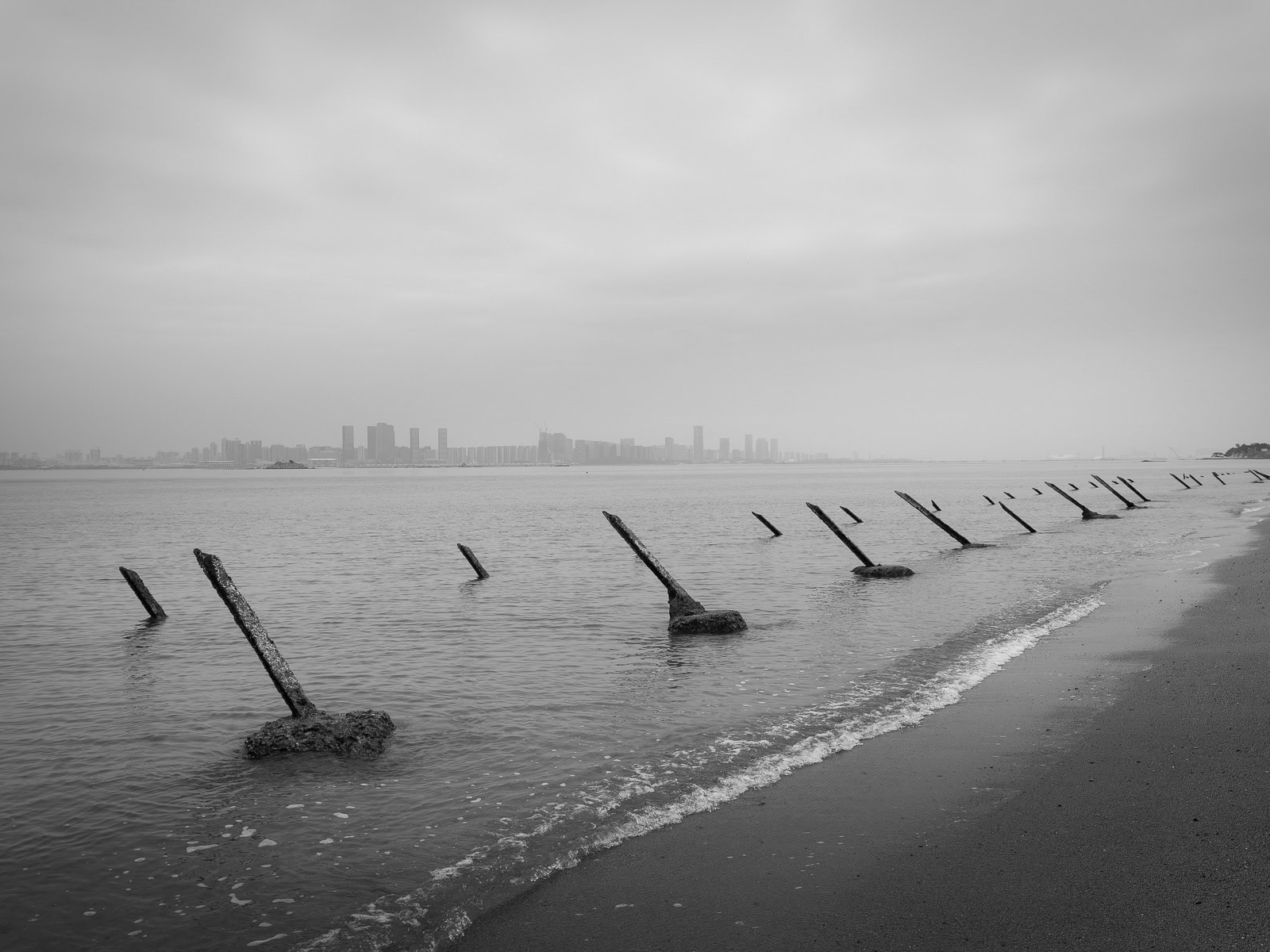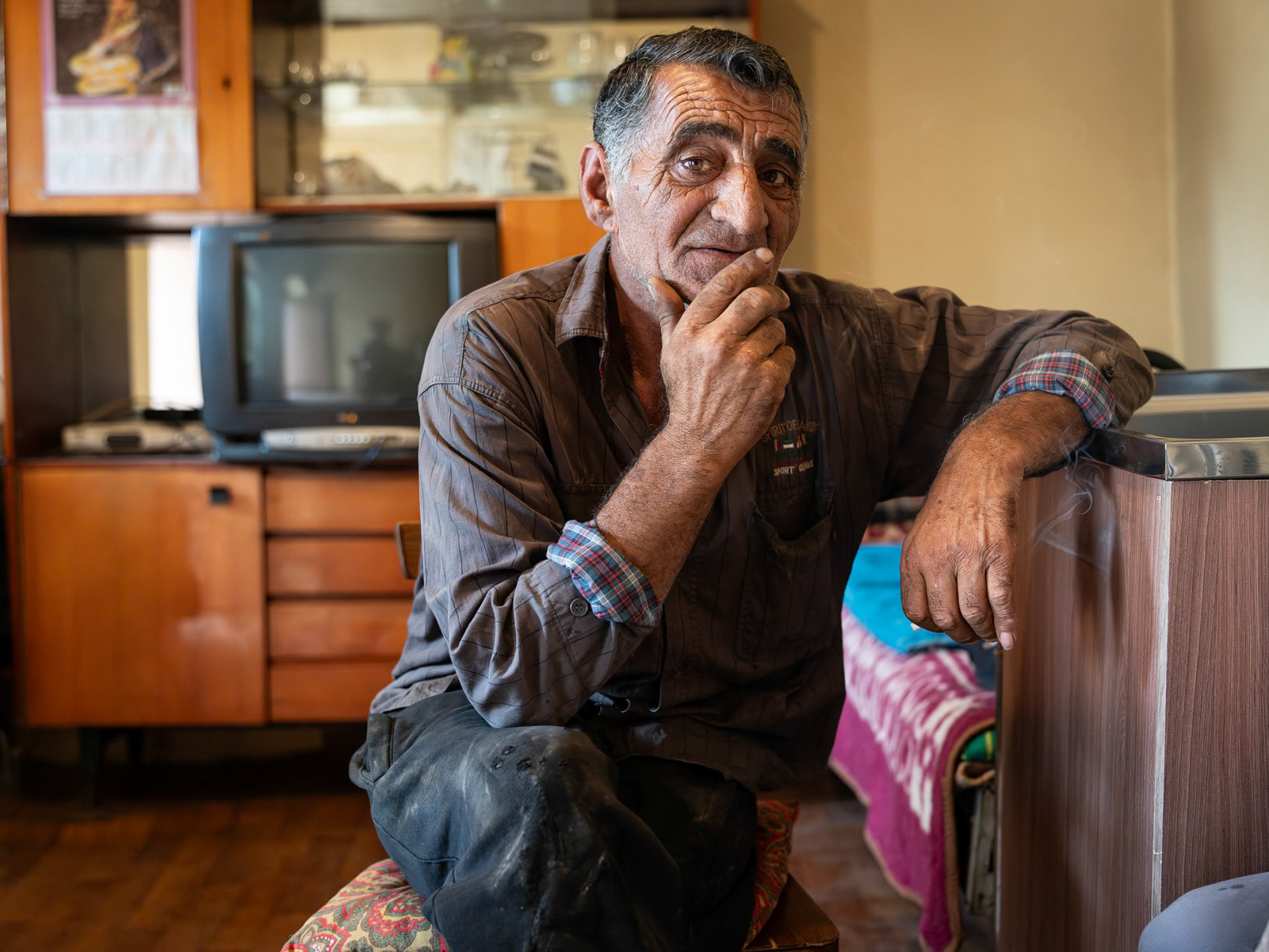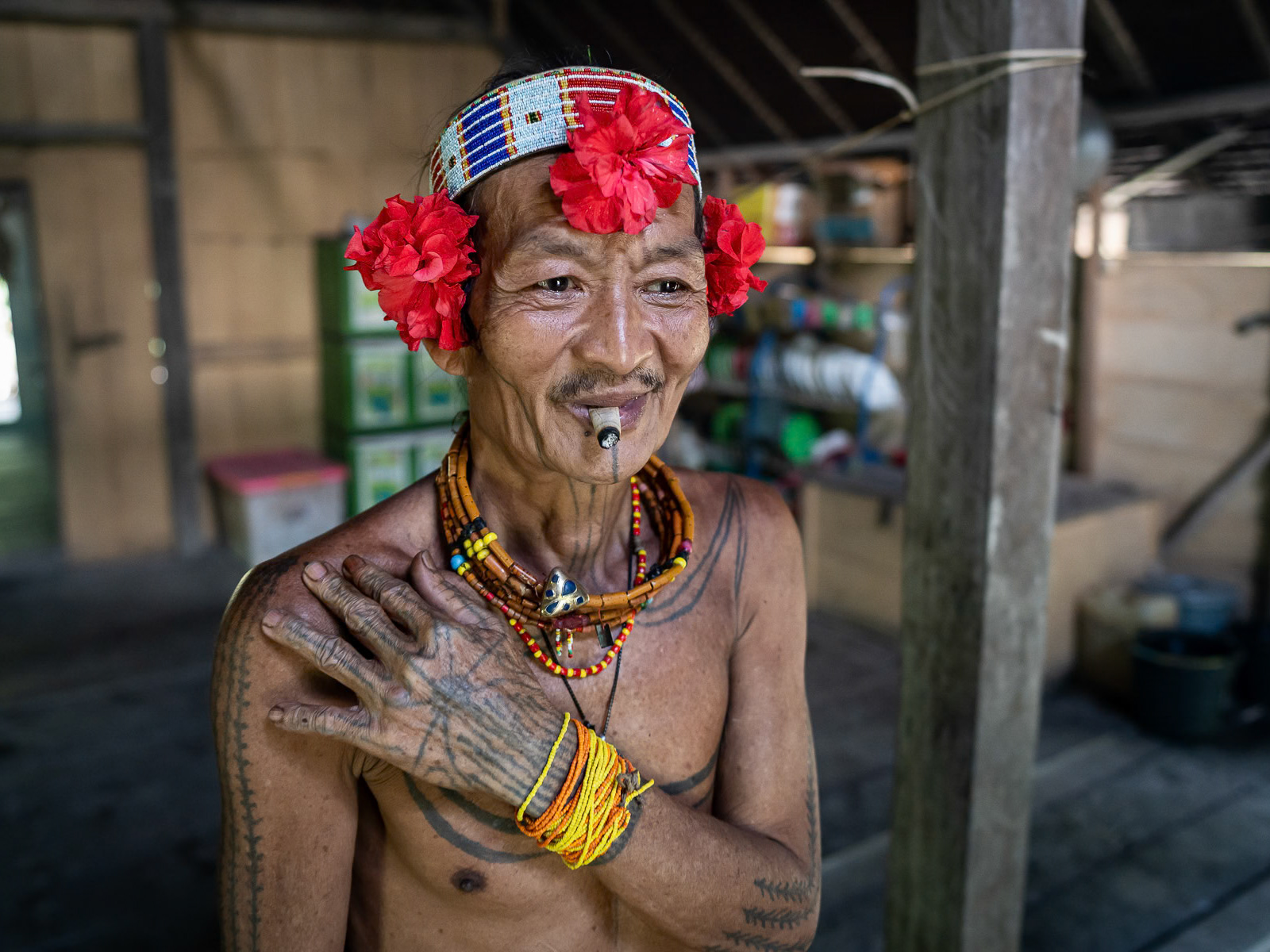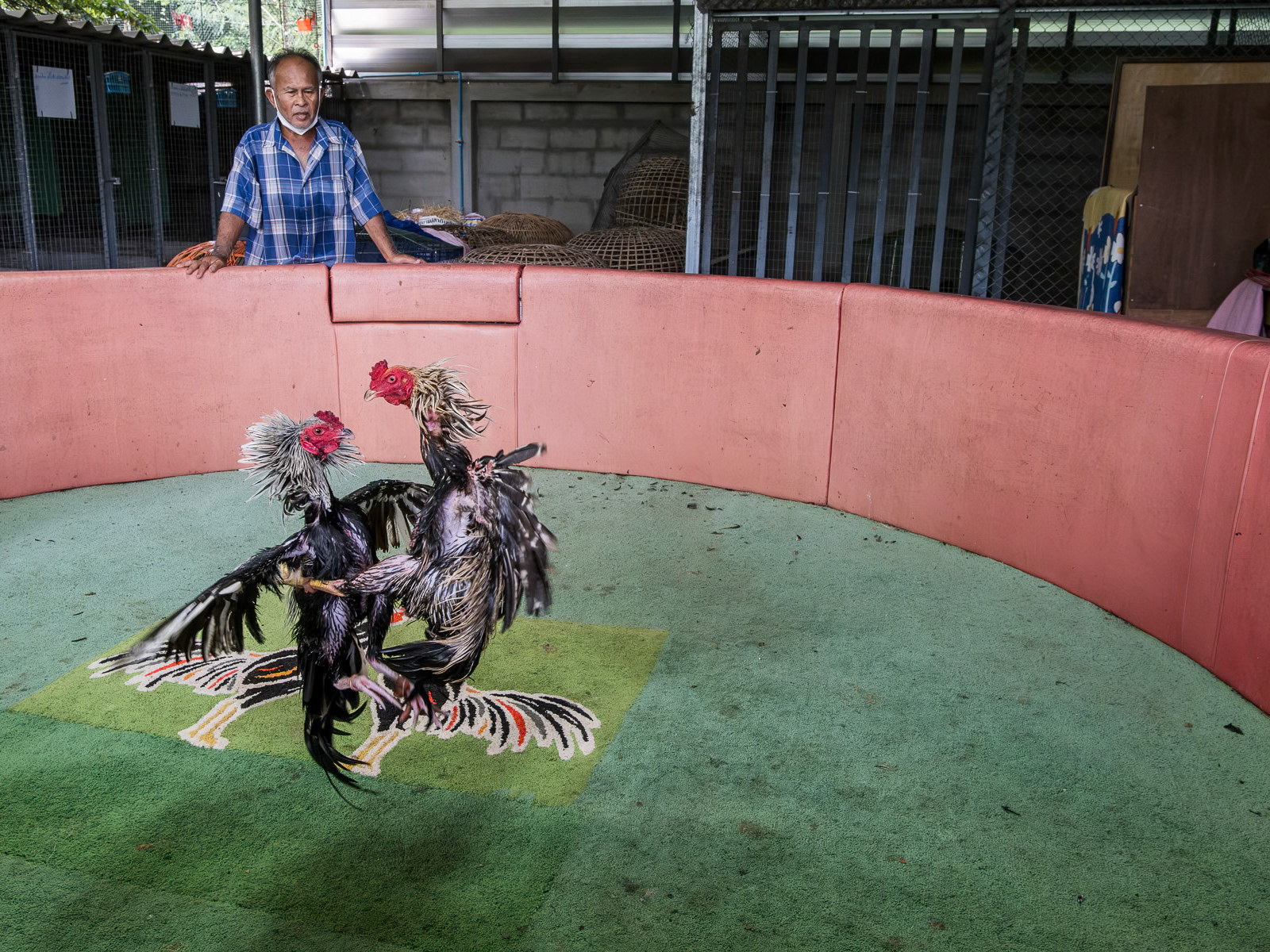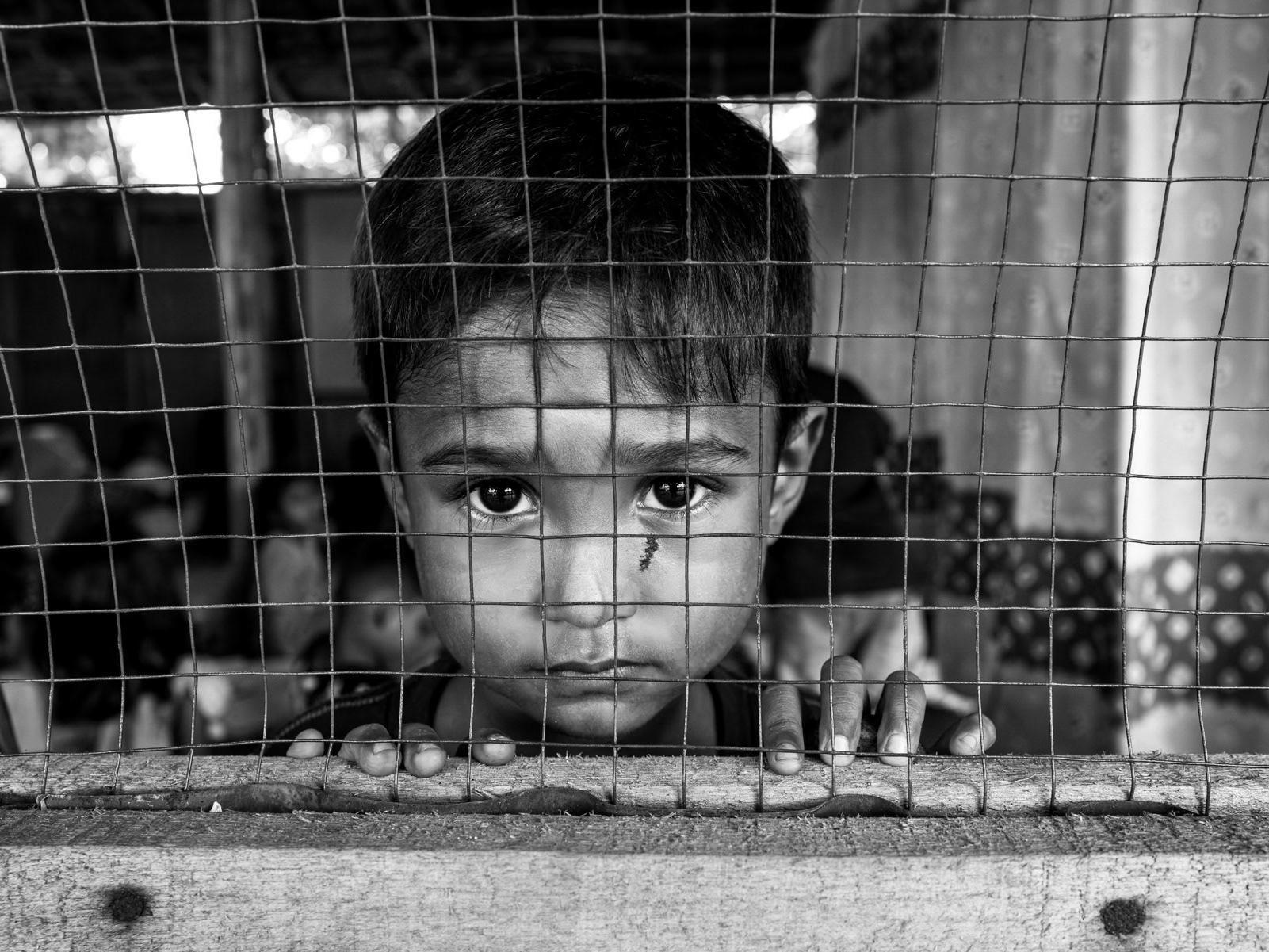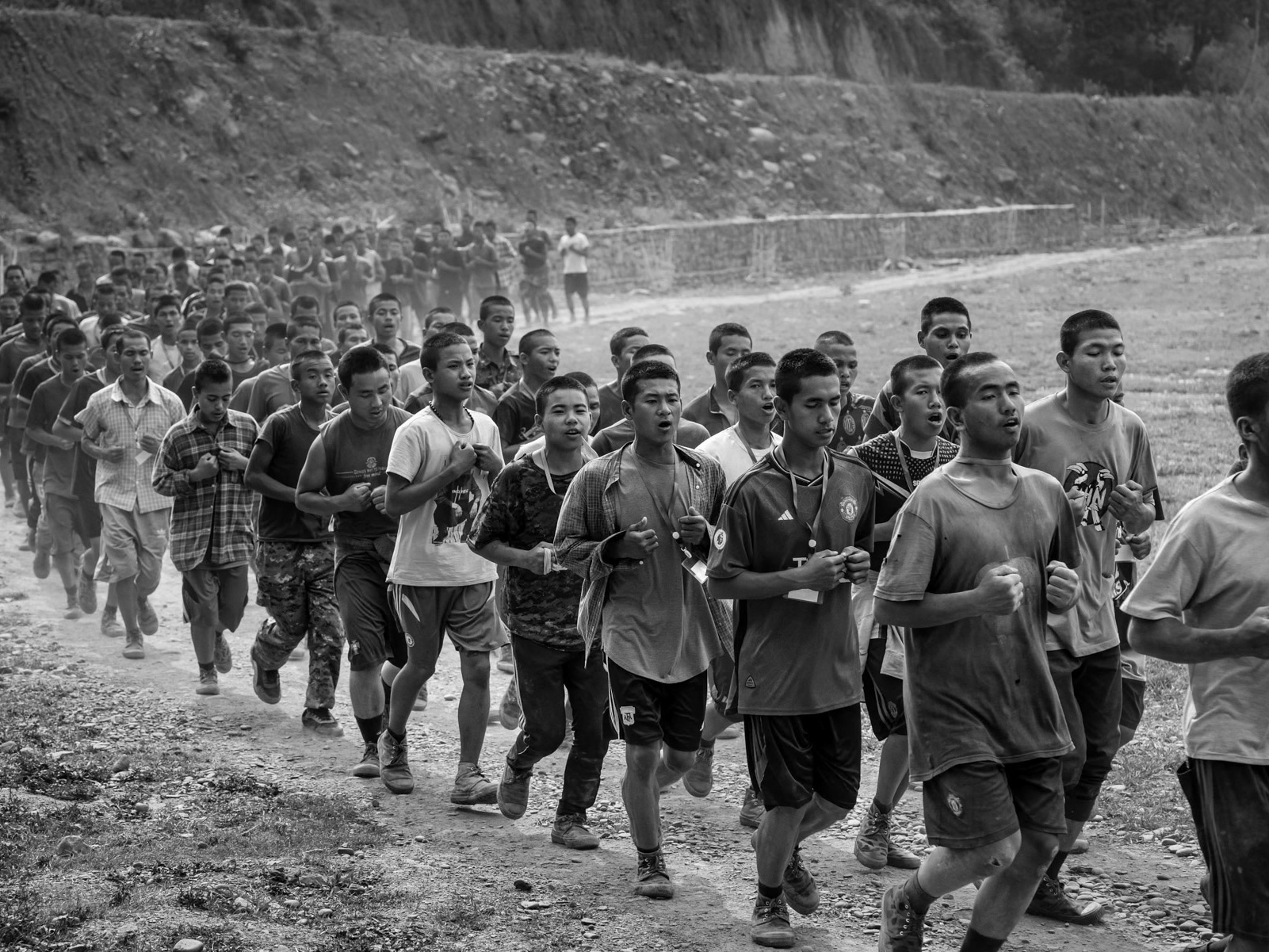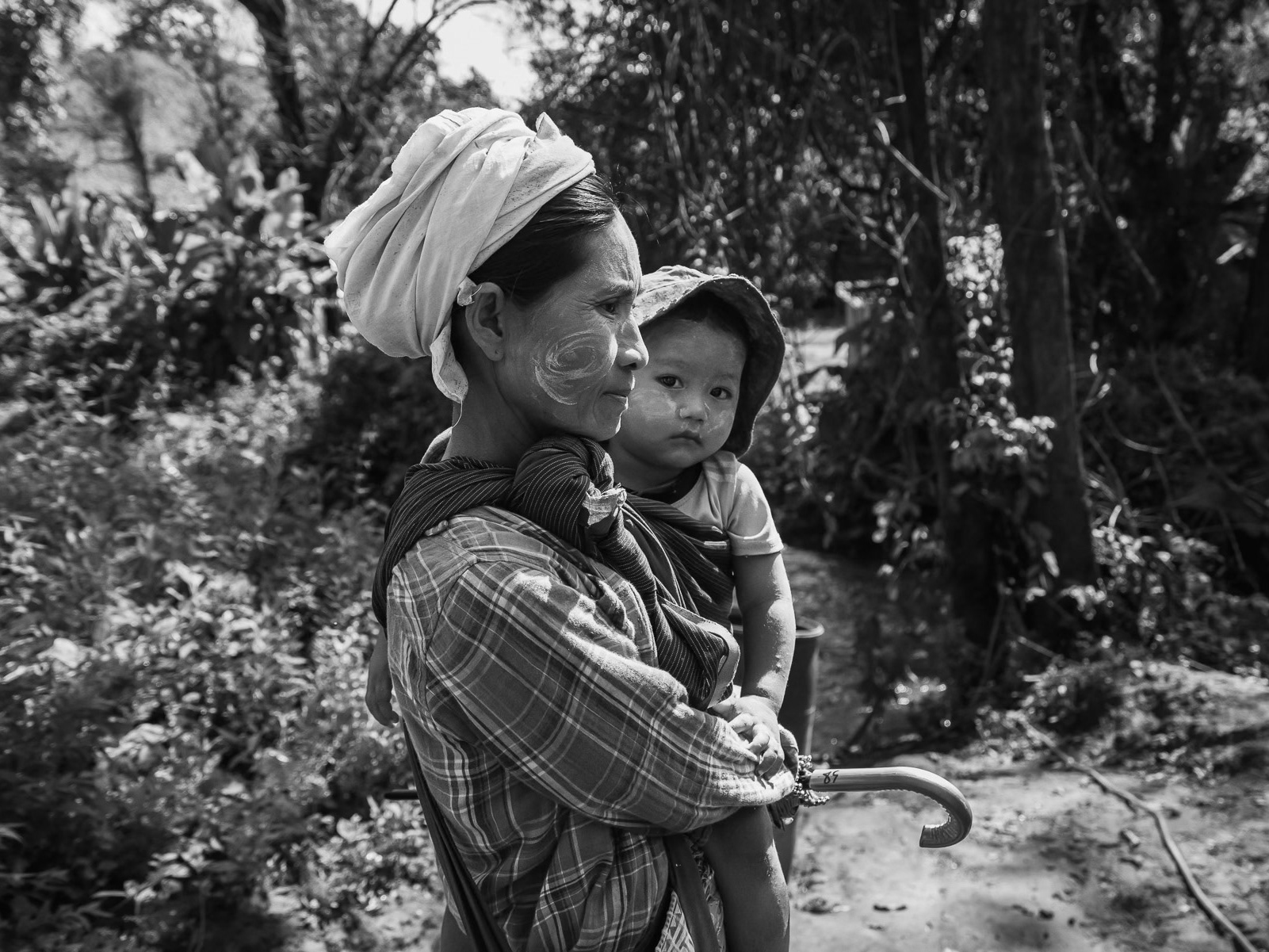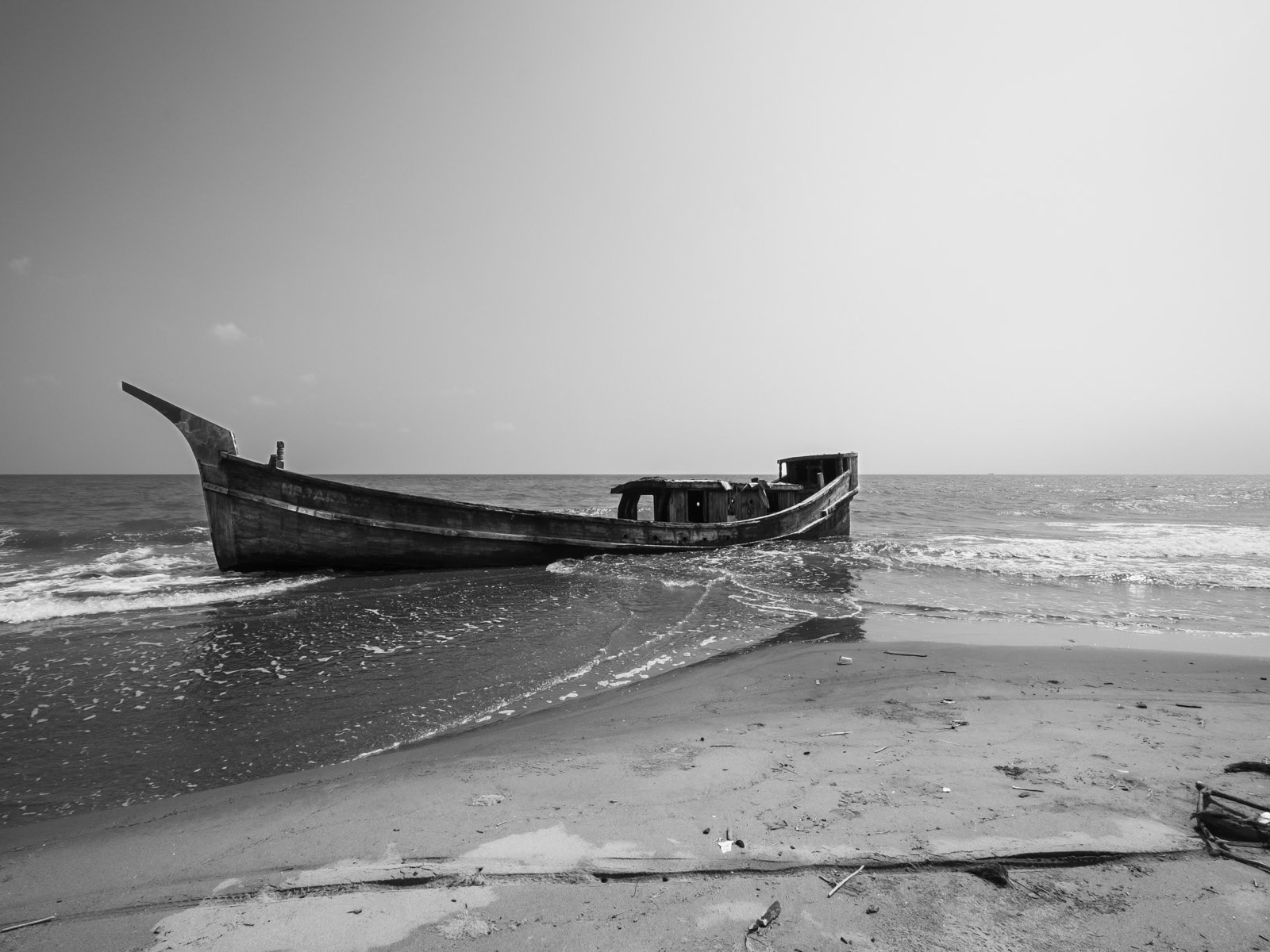Since early 2024, Northern Rakhine State—particularly the townships of Buthidaung and Maungdaw—has been the epicentre of a new and devastating wave of violence against the Rohingya. As fighting escalated between the Arakan Army (AA) and Myanmar’s military, the Rohingya population once again became trapped between armed groups, targeted by systematic persecution and large-scale attacks.
In Buthidaung and Maungdaw, entire neighbourhoods were burned to the ground. Survivors consistently report the use of airstrikes, drones, artillery, and close-range assaults. Villages that previously escaped earlier waves of violence were emptied within days. Families fled through forests, fields, and riverbeds, carrying only what they could hold. Many witnessed killings, forced disappearances, or the separation of children during chaotic escapes.
By late 2024 and into 2025, more than 150,000 newly displaced Rohingya had crossed into Bangladesh—one of the largest influxes since the 2017 genocide. Many crossed the Naf River at night, arriving exhausted, injured, and in deep psychological shock. Their testimonies describe relentless fear: drones hovering above homes, roads controlled by armed groups, and the impossibility of staying in villages now entirely destroyed.
These new arrivals join the over one million Rohingya already living in the Cox’s Bazar refugee camps—the largest refugee settlement in the world. The camps, already overcrowded and strained after years of displacement, are now absorbing another wave of traumatised families who fled the latest phase of violence in Northern Rakhine.
Aid agencies warn that conditions are deteriorating as the population grows, resources shrink, and safe return remains impossible.
Aid agencies warn that conditions are deteriorating as the population grows, resources shrink, and safe return remains impossible.
“Rohingya Voices from Northern Rakhine” presents the stories of these recently arrived survivors. Through their portraits and testimonies, the series documents the continuing persecution, the unprecedented brutality of the 2024–2025 attacks, and the human cost of a crisis that shows no sign of ending. It is a record of a people repeatedly uprooted—and a reminder that their voices remain essential in understanding the realities unfolding in Northern Rakhine today.
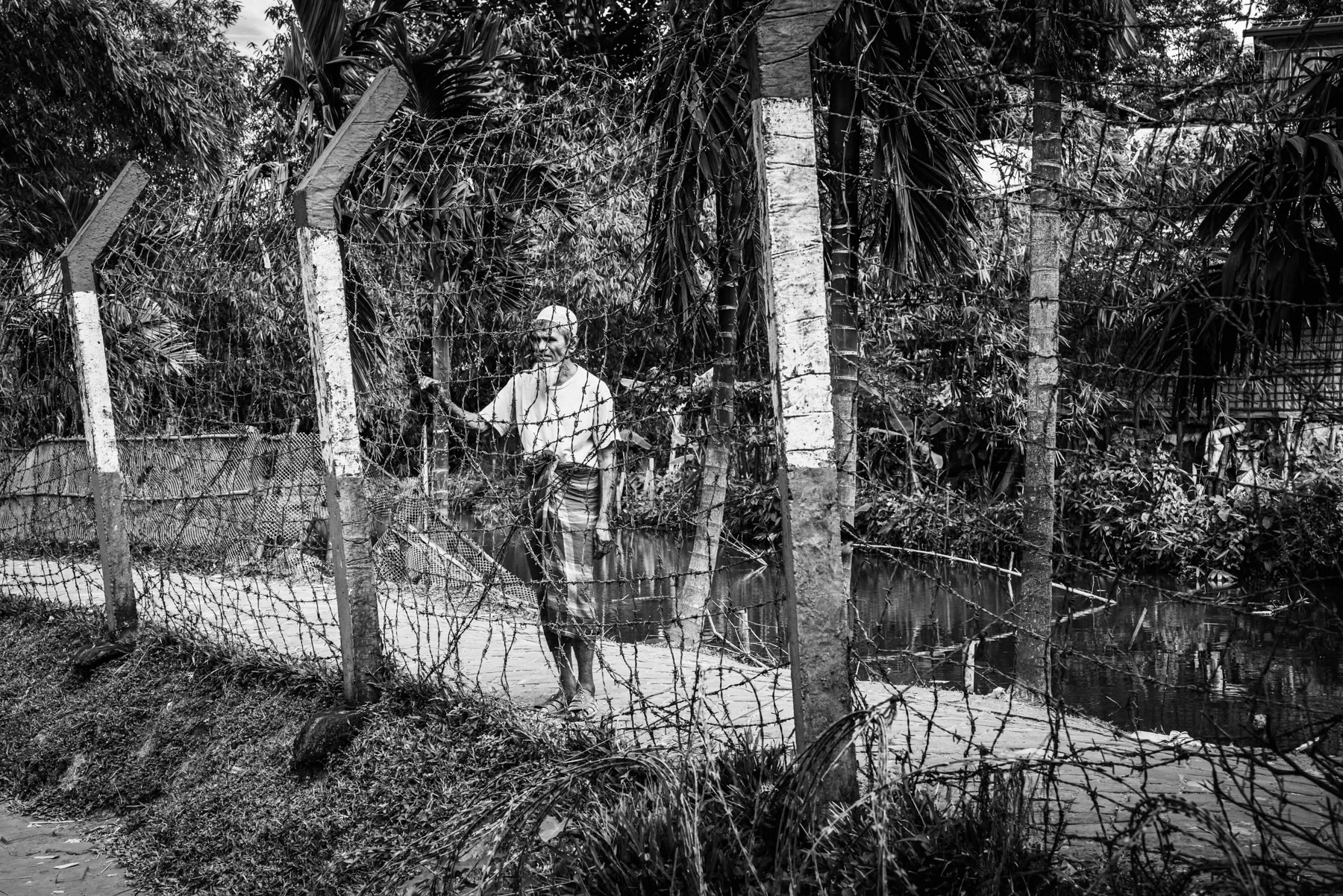
An elderly Rohingya man stands along the barbed-wire fence encircling the refugee camp, a barrier that severely restricts movement both in and out of the camp and between its different sectors. Kutupalong refugee camp, Cox's Bazar, Bangladesh, September 2025

Abu Alom, 36, from Setilla Ward in Maungdaw, stands with his youngest daughter as he recounts how a drone strike carried out by the Arakan Army severely injured him, his wife, and both daughters on 28 July 2024 while they were at home. The family fled immediately and arrived in Bangladesh the same day. Originally from Shabe Bazar—evacuated in 2017—he had resettled in Maungdaw and worked for NGOs before being displaced again by the attack. Kutupalong refugee camp, Ukhiya, Bangladesh, September 2025
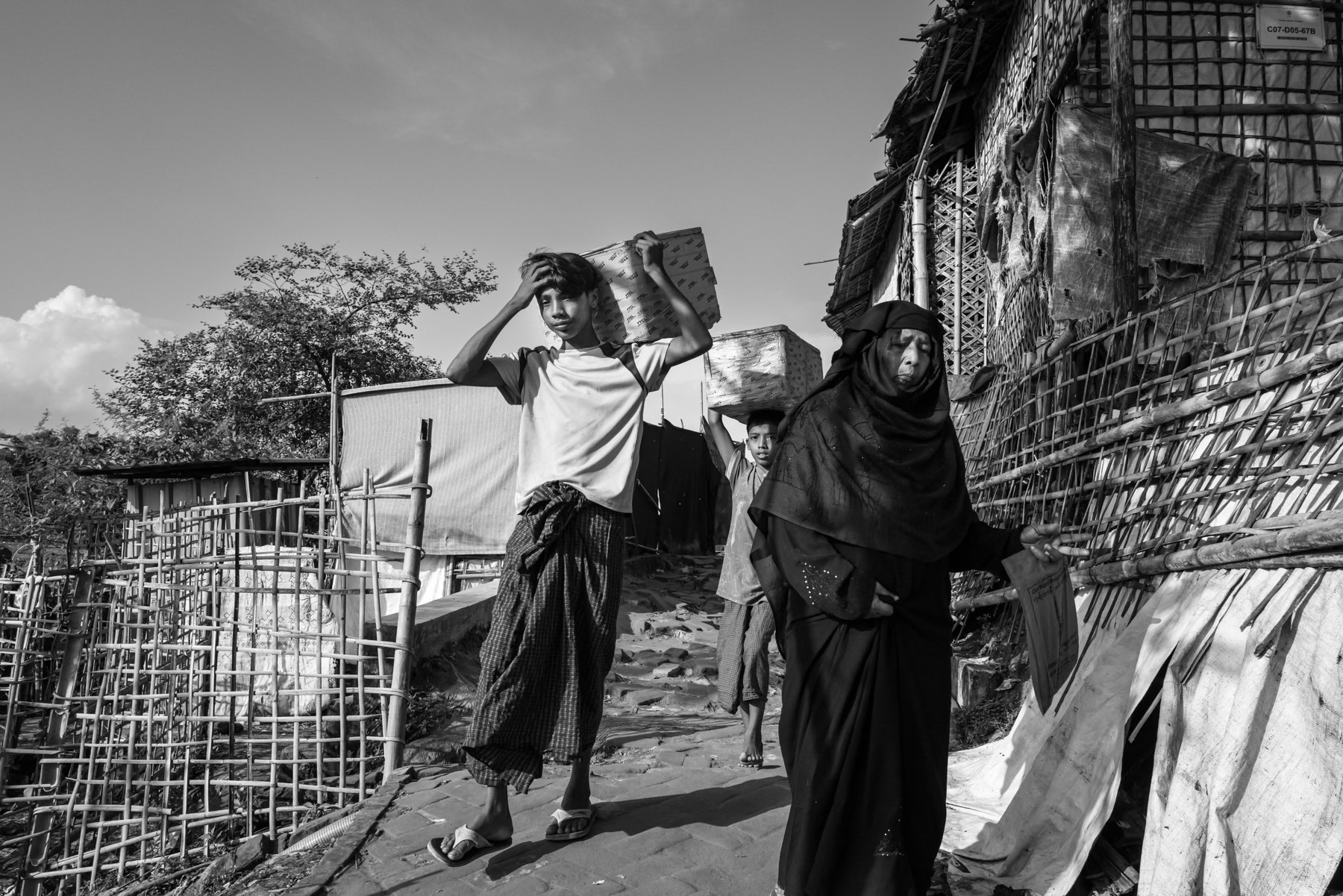
An elderly Rohingya woman carefully descends a paved alley in the camp, while two young adolescents carry goods on their heads. The settlement now hosts well over **1 million refugees**, making it the largest refugee camp in the world. Since 2024, at least **150,000 more Rohingya** have fled violence carried out by the Arakan Army (AA). Kutupalong refugee camp, Ukhiya, Bangladesh, September 2025
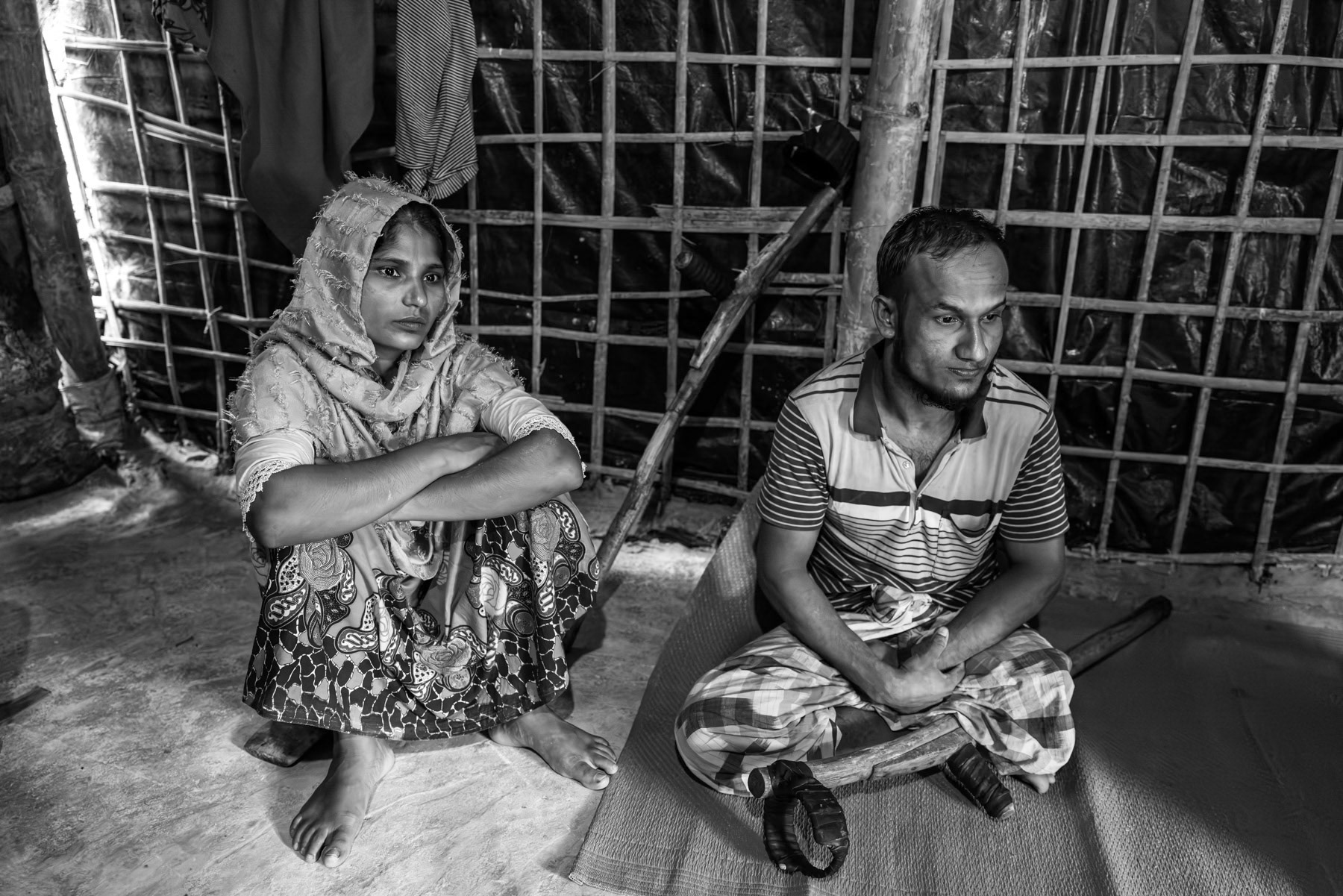
Abu Rahim, 32, from Lawidon village near Buthidaung, sits with his wife as he recounts losing his leg when the Arakan Army shelled their community in March 2024, shortly after ordering residents to evacuate. Dozens were killed and many more injured. Evacuated by the Arakan Army to Sandu village in Rathedaung Township, he was amputated in their medical facility and remained there for a year with other displaced Rohingya. He describes widespread extortion of villagers who were forced to contribute to the armed group’s war effort despite having lost everything. He arrived in Bangladesh in June 2025. Kutupalong refugee camp, Ukhiya, Bangladesh, September 2025
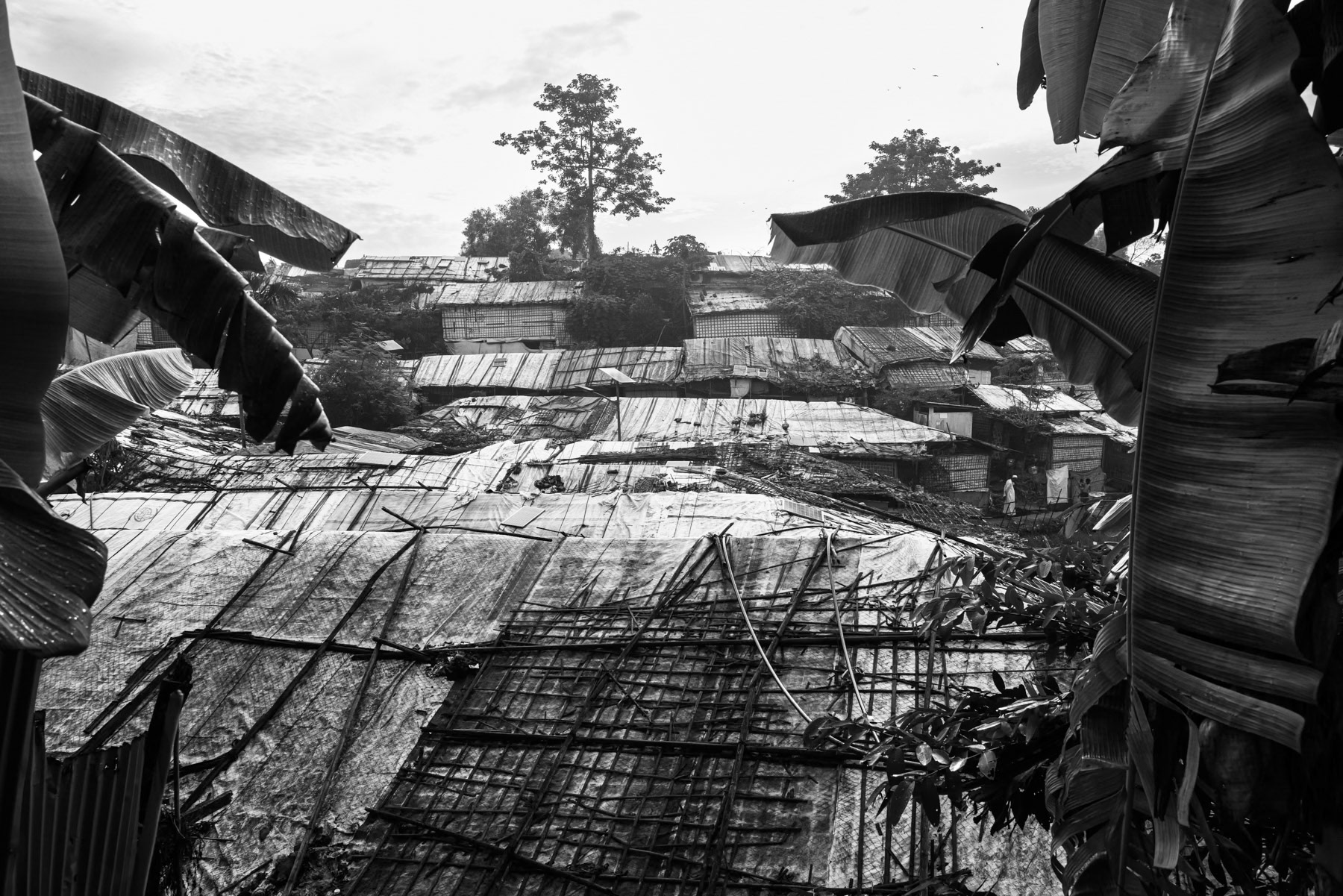
Makeshift shelters stretch across Kutupalong camp, providing temporary refuge for Rohingya families fleeing violence in Rakhine, with approximately 150,000 new arrivals since early 2024. Kutupalong refugee camp, Cox's Bazar, Bangladesh, September 2025
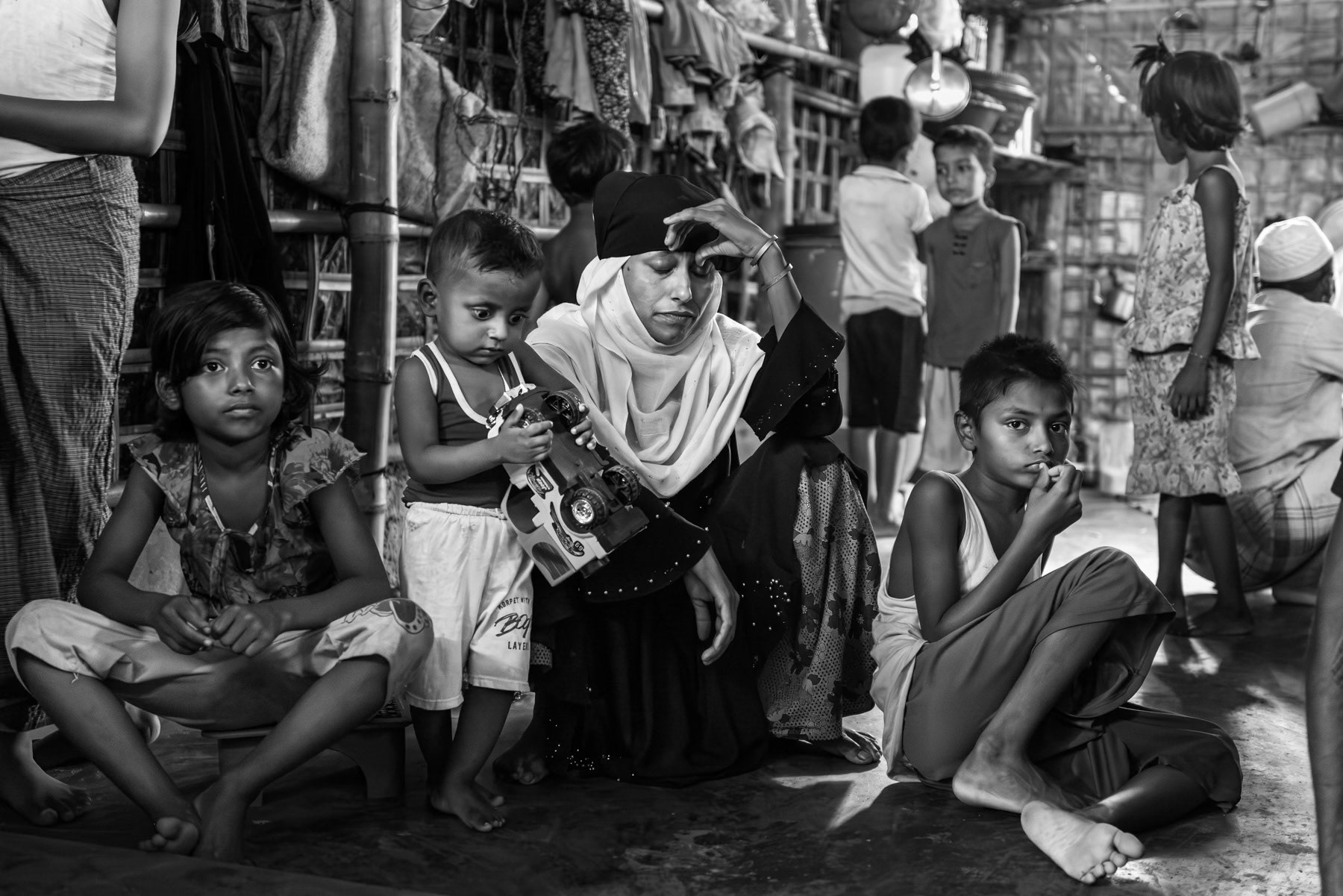
Jana Begum, 30, from Laway Daung in Buthidaung Township, sits with her children inside their shelter in the refugee camp after months of displacement. She fled the village with her family of nine in May 2024, seeking refuge in Ward 5 of Buthidaung. They left the township on 27 January 2025 and reached Bangladesh on 20 February 2025. Kutupalong refugee camp, Ukhiya, Bangladesh, September 2025
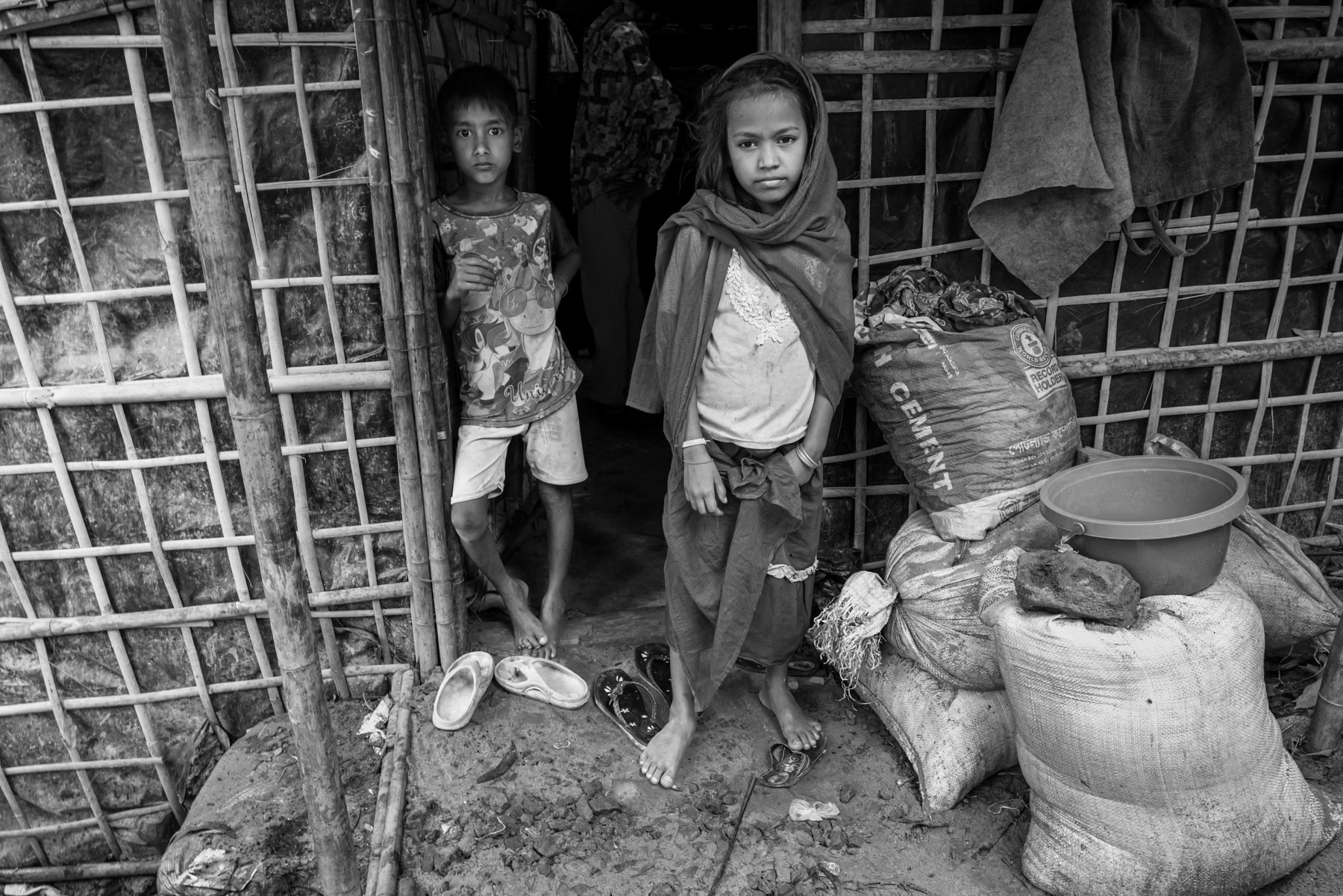
A sister and brother stand in front of their shelter in the camp, part of the more than 150,000 Rohingya who have fled Rakhine since 2024 due to persecution by the Arakan Army. Since 2017, the refugee camps in Bangladesh now host well over 1 million Rohingya, while only a handful remain in Buthidaung and Maungdaw townships. Kutupalong refugee camp, Ukhiya, Bangladesh, September 2025

Anamullah, 40, from Shida Fara in Maungdaw Township, with his youngest son after being injured in the leg by a drone strike while fleeing Myanmar. His wife and other children fled with him, arriving in Bangladesh on 20 August 2024. Before displacement, Anamullah worked as a warehouse daily worker for the ICRC. Kutupalong refugee camp, Ukhiya, Bangladesh, September 2025

Alomara, 60, from Laway Daung in Buthidaung Township, sits in her shelter in the refugee camp after fleeing Myanmar. She and her family left their village on 14 May 2024 and sheltered in Ward 5 of Buthidaung for seven months before continuing their escape. They arrived in Bangladesh on 17 December 2024. Though none of the nine family members traveling with her were injured, she reports that a brother and sister were killed during the attack on their village, and that the family had no access to food while fleeing toward the border. Kutupalong refugee camp, Ukhiya, Bangladesh, September 2025
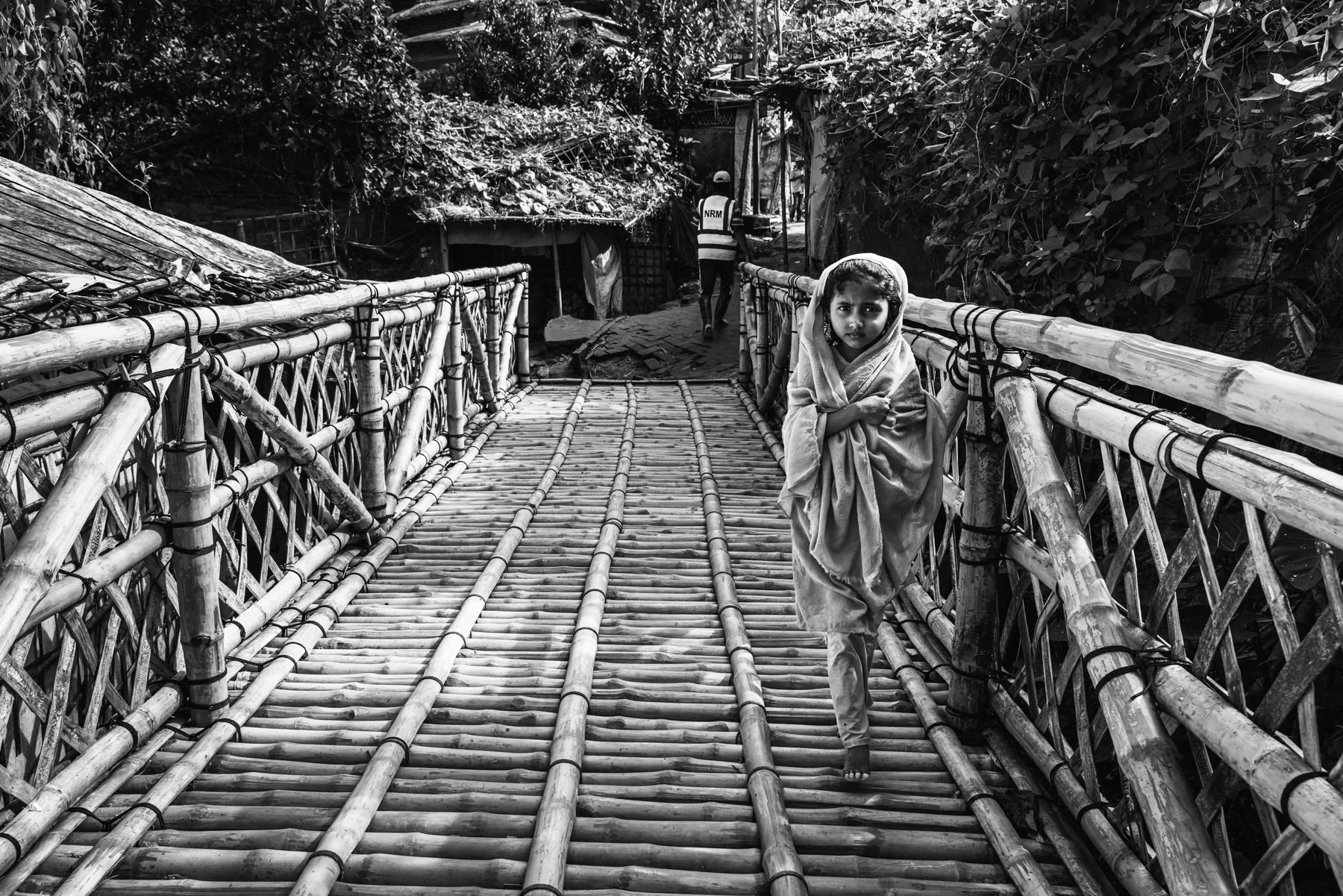
A Rohingya girl carefully crosses a bamboo bridge connecting shelters in the densely packed refugee camp. Kutupalong refugee camp, Cox's Bazar, Bangladesh, September 2025
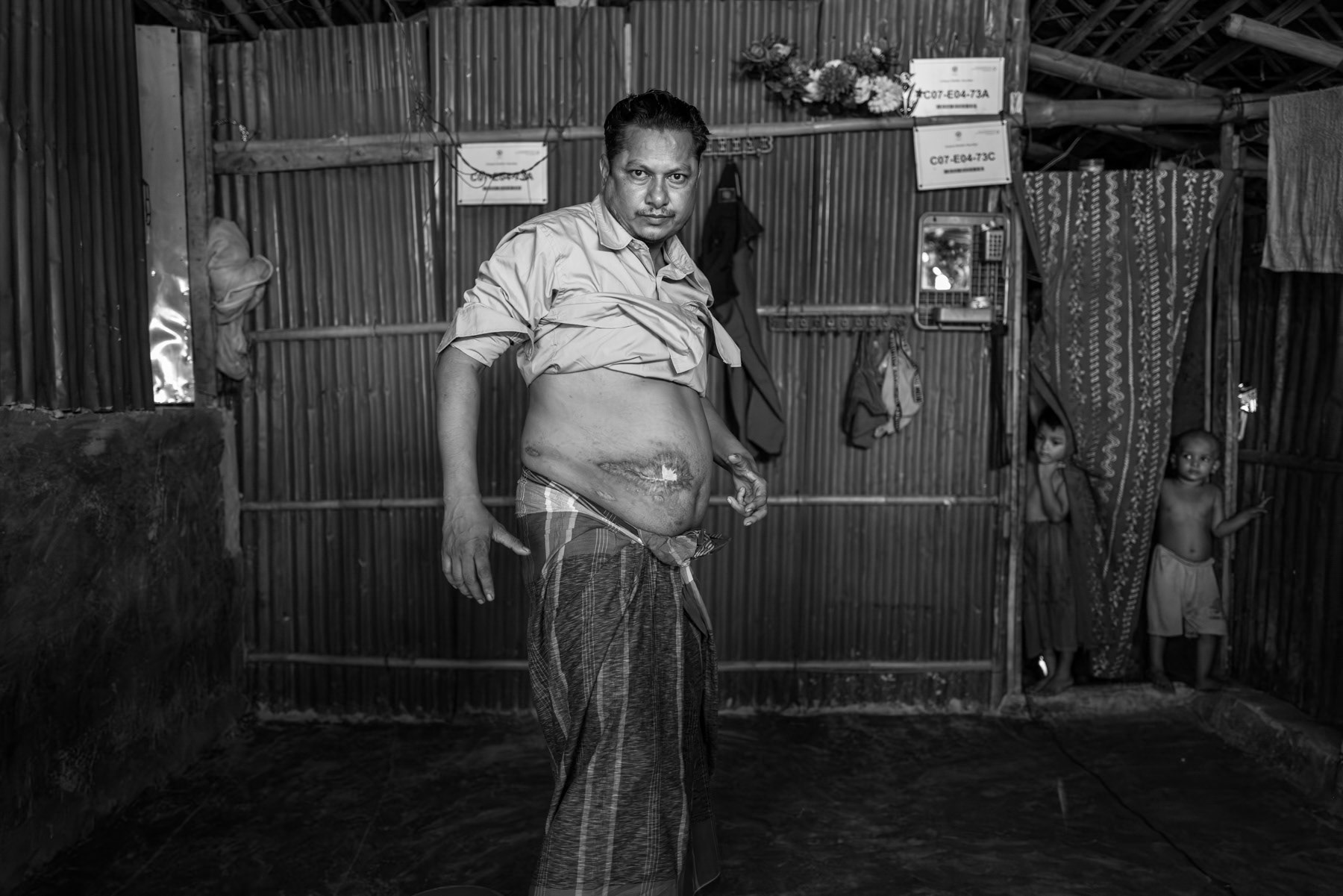
Rohingya survivor Korim Mullah, 35, shows scars from the abdominal injuries he sustained when a drone strike hit his family as they fled toward Bangladesh on 6 August 2024. The attack, carried out by the Arakan Army, killed his 7-year-old daughter. Speaking in September 2025, he recounts surviving multiple shrapnel wounds that required emergency treatment by Médecins Sans Frontières and ongoing medical care, with further fragments still lodged in his abdomen, leg, and arm. Kutupalong refugee camp, Ukhiya, Bangladesh, September 2025
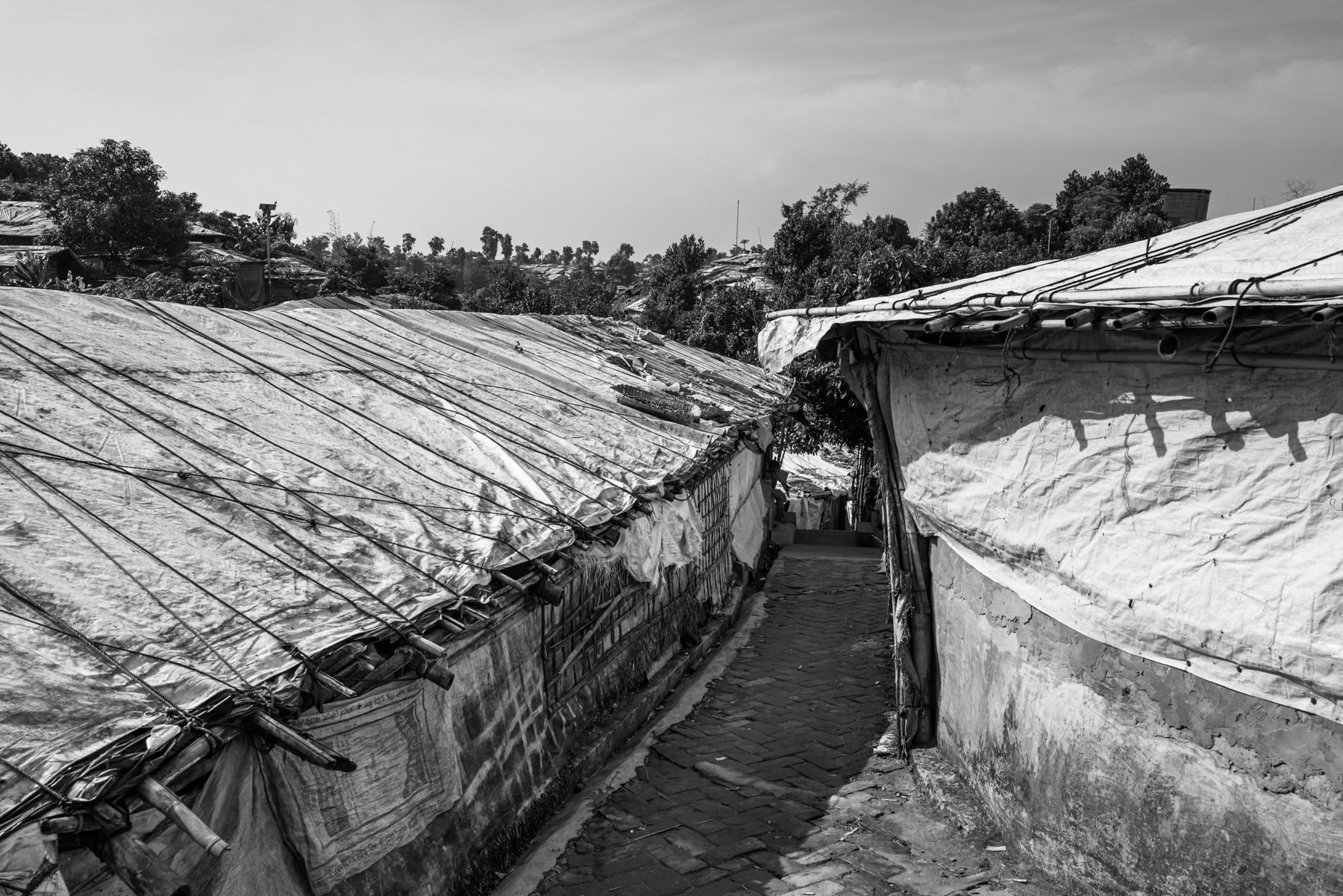
Makeshift shelters stretch across Kutupalong camp, providing temporary refuge for Rohingya families fleeing violence in Rakhine, with approximately 150,000 new arrivals since early 2024. Kutupalong refugee camp, Cox's Bazar, Bangladesh, September 2025
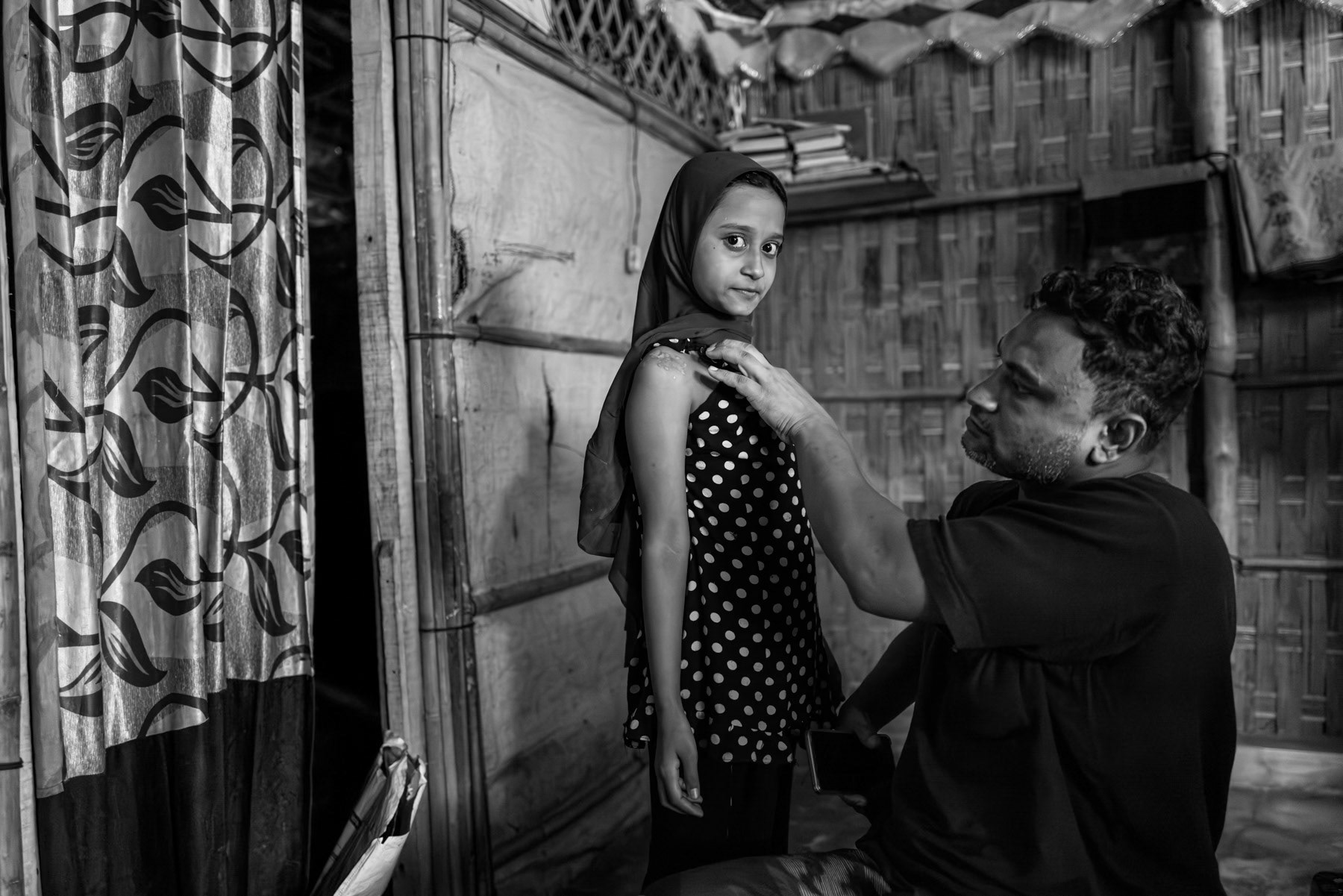
Abu Alom, 36, from Setilla Ward in Maungdaw, stands with his eldest daughter, who shows the healed shrapnel wound on her upper arm from a drone strike carried out by the Arakan Army on 28 July 2024. The attack severely injured him, his wife, and both daughters, forcing the family to flee and reach Bangladesh the same day. Originally from Shabe Bazar—evacuated in 2017—he had resettled in Maungdaw and worked for NGOs before being displaced again by the attack. Kutupalong refugee camp, Ukhiya, Bangladesh, September 2025
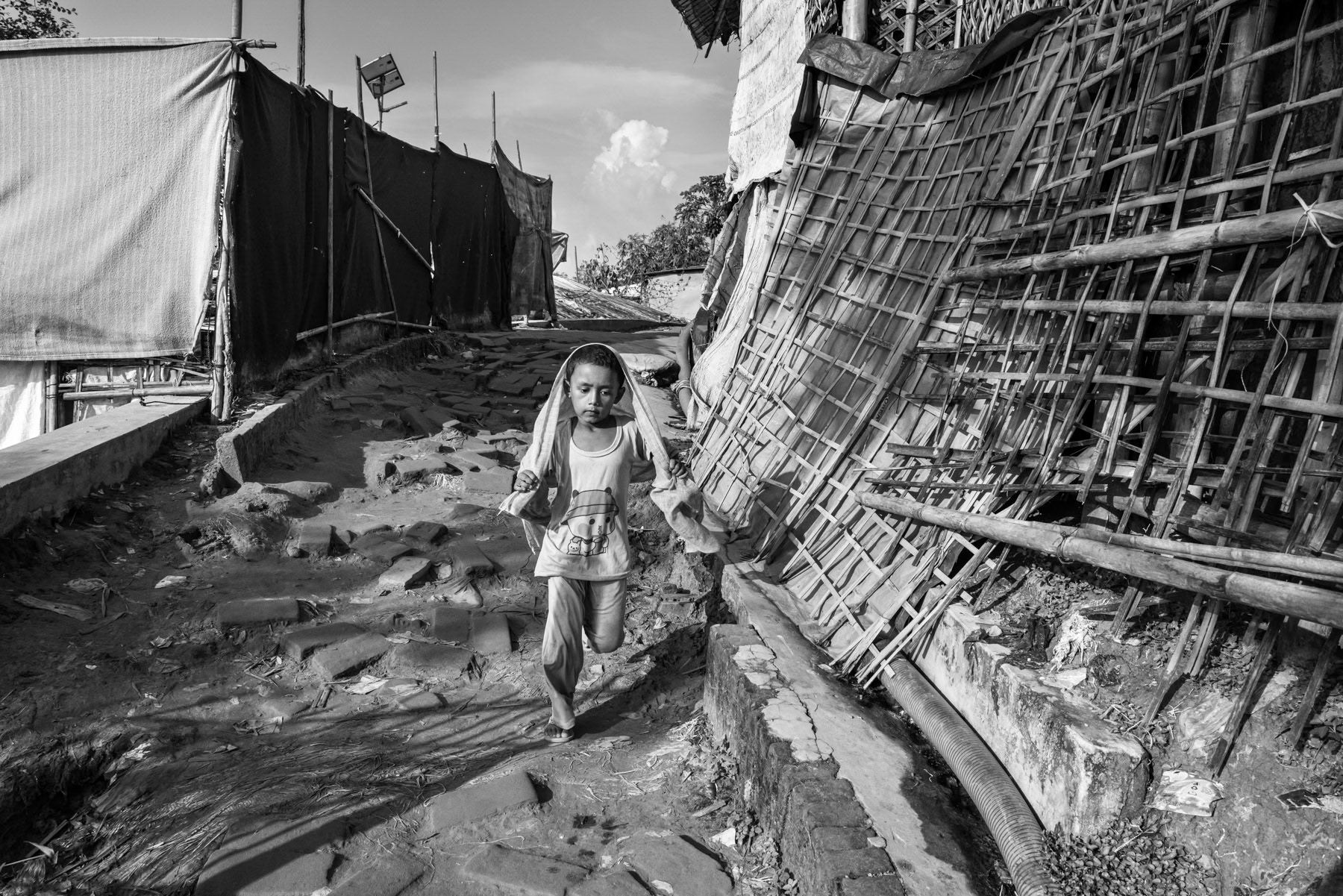
A Rohingya girl runs downhill along a paved alley in the camp, part of a settlement now hosting well over **1 million refugees**, making it the largest refugee camp in the world. Since 2024, at least **150,000 more Rohingya** have fled violence carried out by the Arakan Army (AA). Kutupalong refugee camp, Ukhiya, Bangladesh, September 2025

Umar Farooq, from Shida Para in Maungdaw, stands after being seriously injured in the leg by drone shrapnel fired from Arakan Army positions near the Naf River while fleeing Myanmar with his younger sister on 7 August 2024. He arrived in Bangladesh on 8 August 2024, where he received medical treatment. Umar was a student before being forced to flee by the Arakan Army. Kutupalong refugee camp, Ukhiya, Bangladesh, September 2025
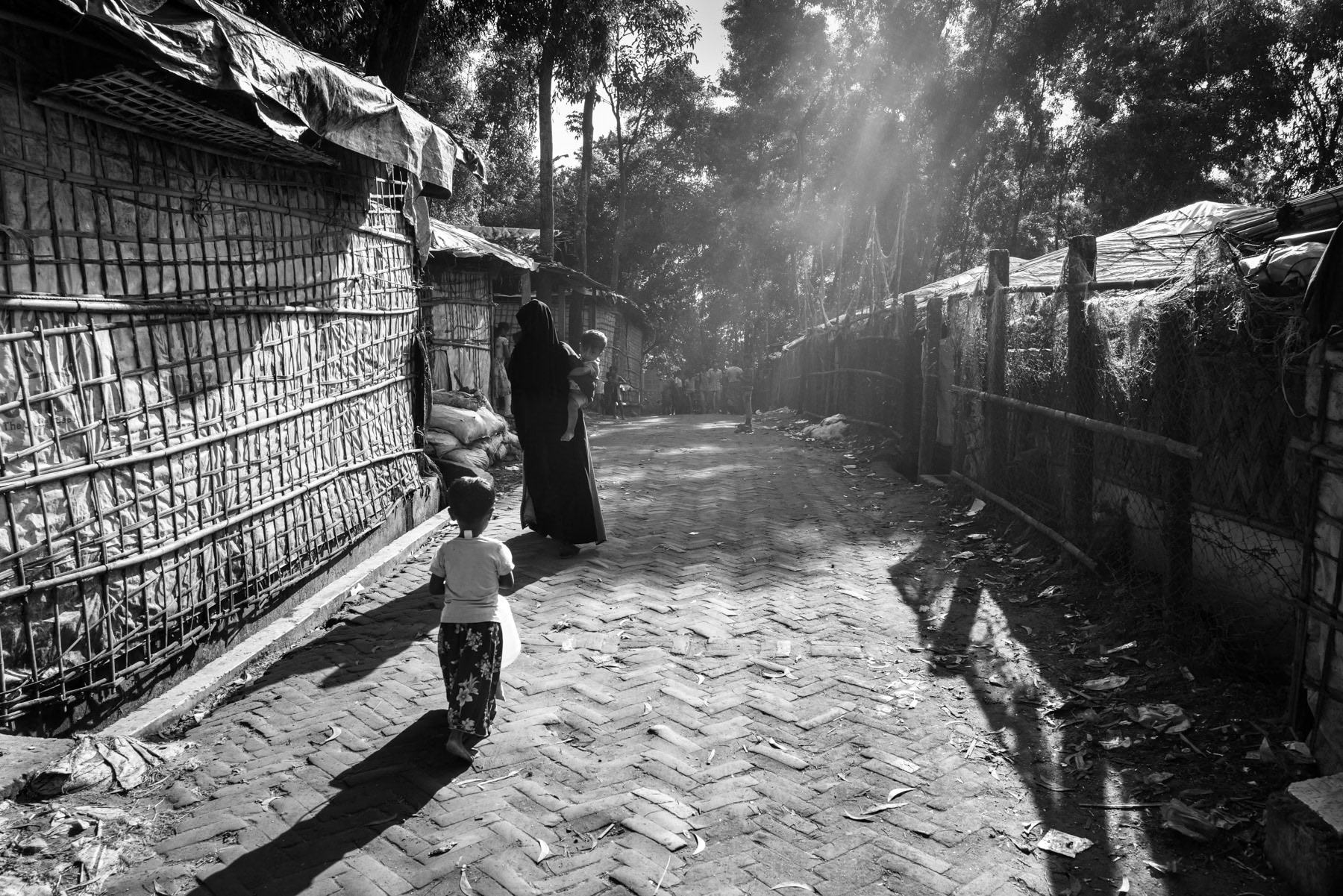
Early morning light illuminates a paved market alley in the camp, quiet and empty before the day begins. Kutupalong refugee camp, Ukhiya, Bangladesh, September 2025
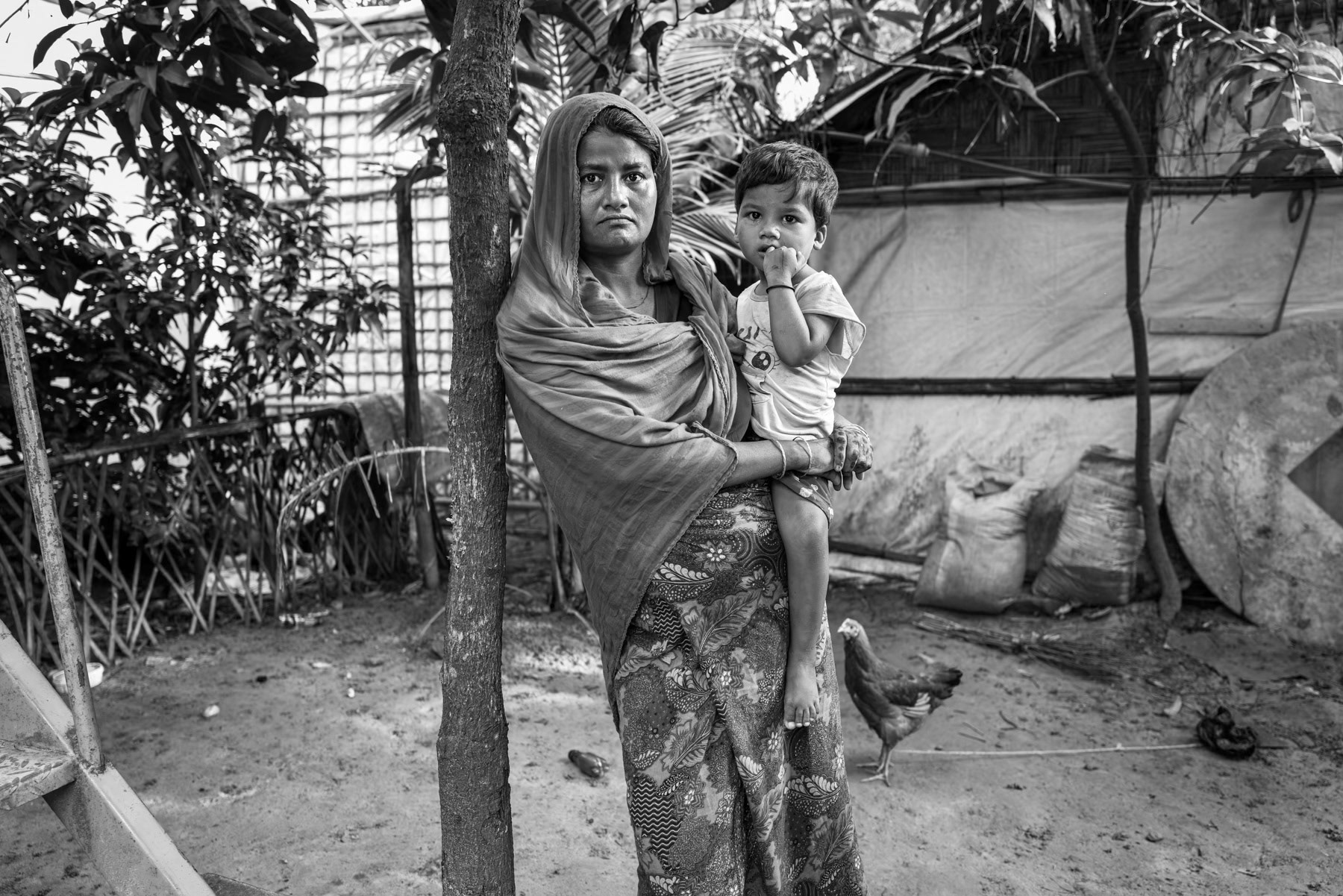
A Rohingya woman from Maungdaw stands with her child after recently fleeing Myanmar. She reports suffering from mental distress following the journey and the imprisonment of her husband in Sittwe. Kutupalong refugee camp, Cox's Bazar, Bangladesh, September 2025
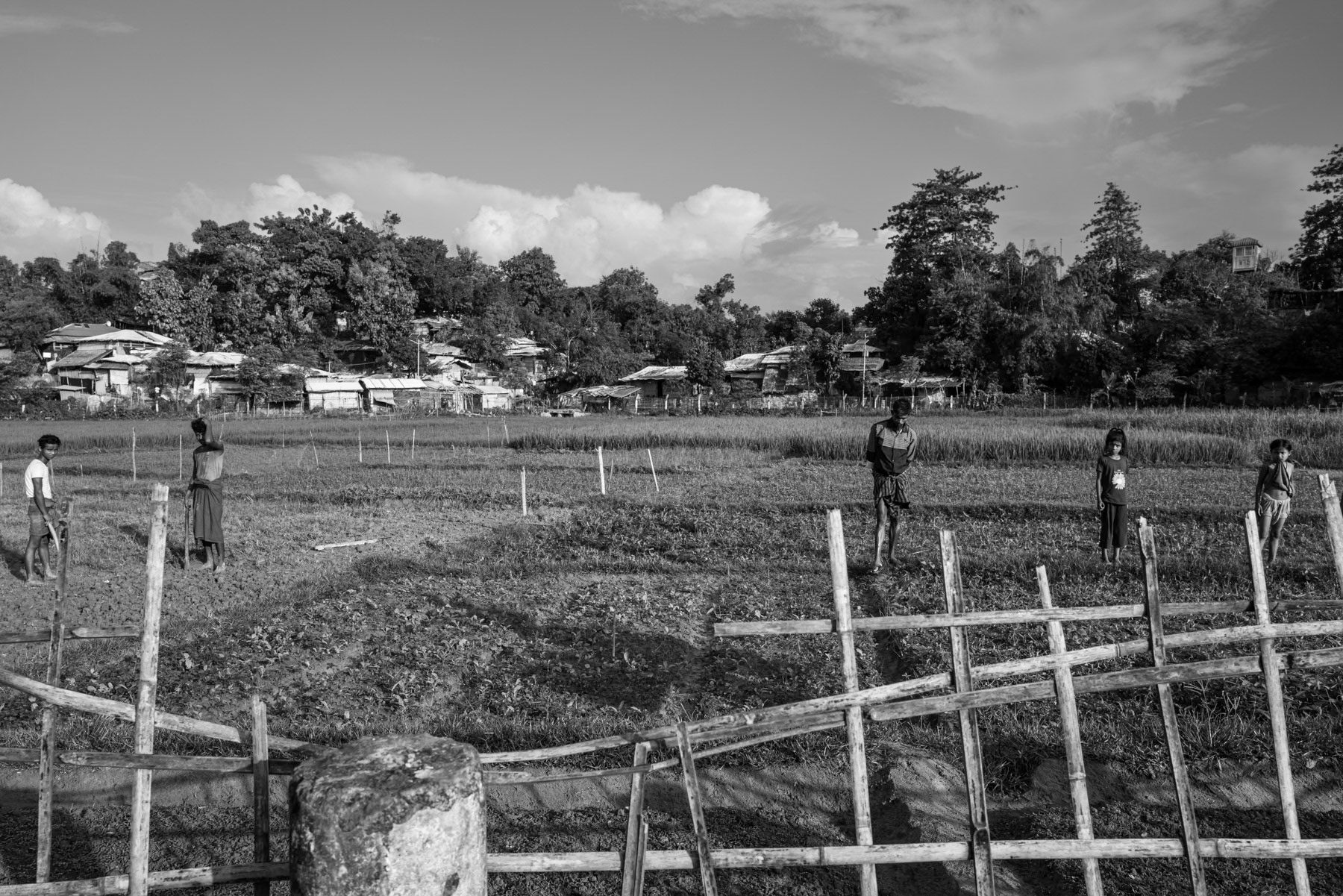
Rohingya refugees work in agricultural fields bordering the camp, tending crops and clearing land to support their families while navigating the challenges of displacement and limited resources. Kutupalong refugee camp, Ukhiya, Bangladesh, September 2025
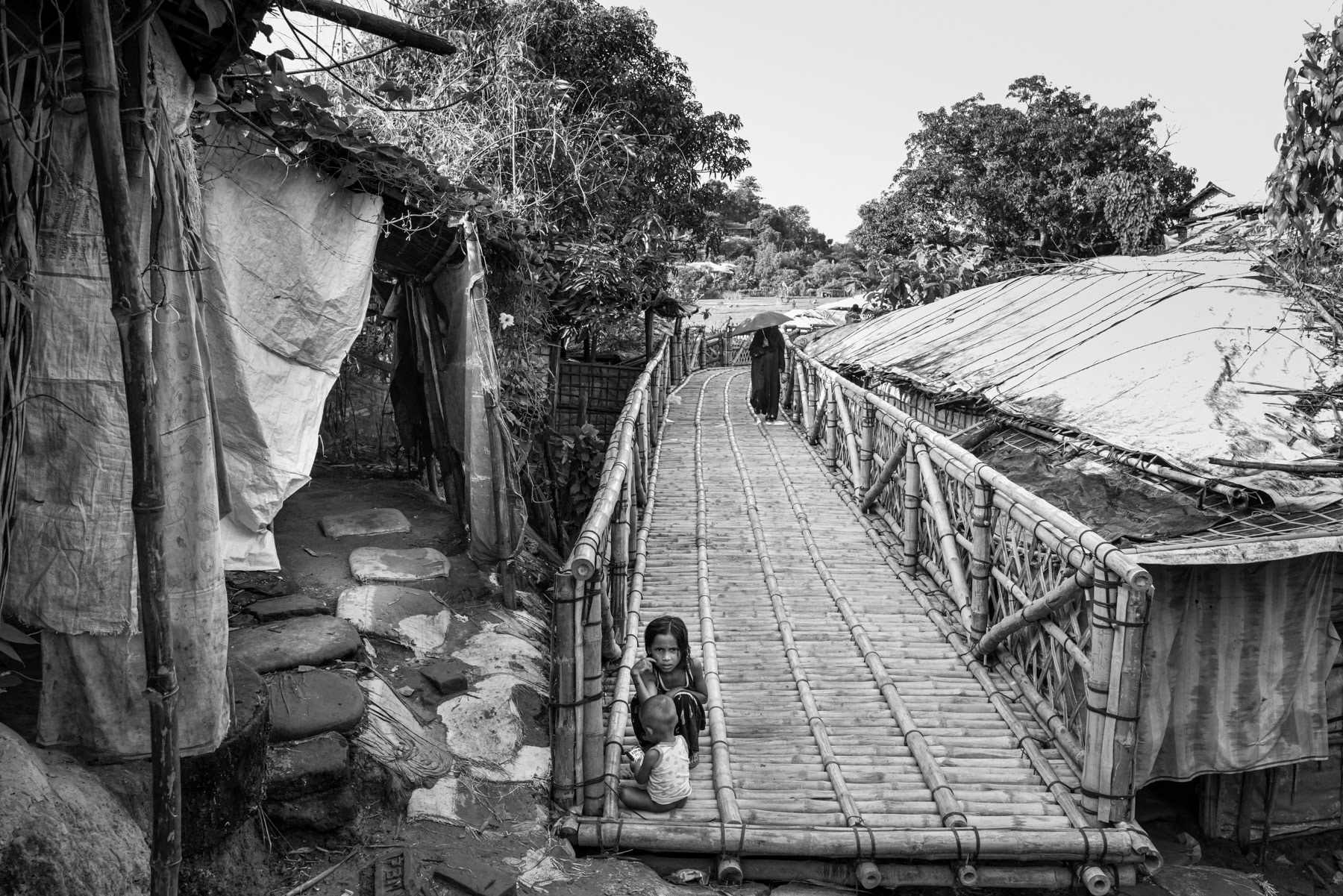
A bamboo bridge spans between two sectors of Camp 7 in Kutupalong, connecting densely packed shelters across the hilly terrain. Kutupalong refugee camp, Ukhiya, Bangladesh, September 2025
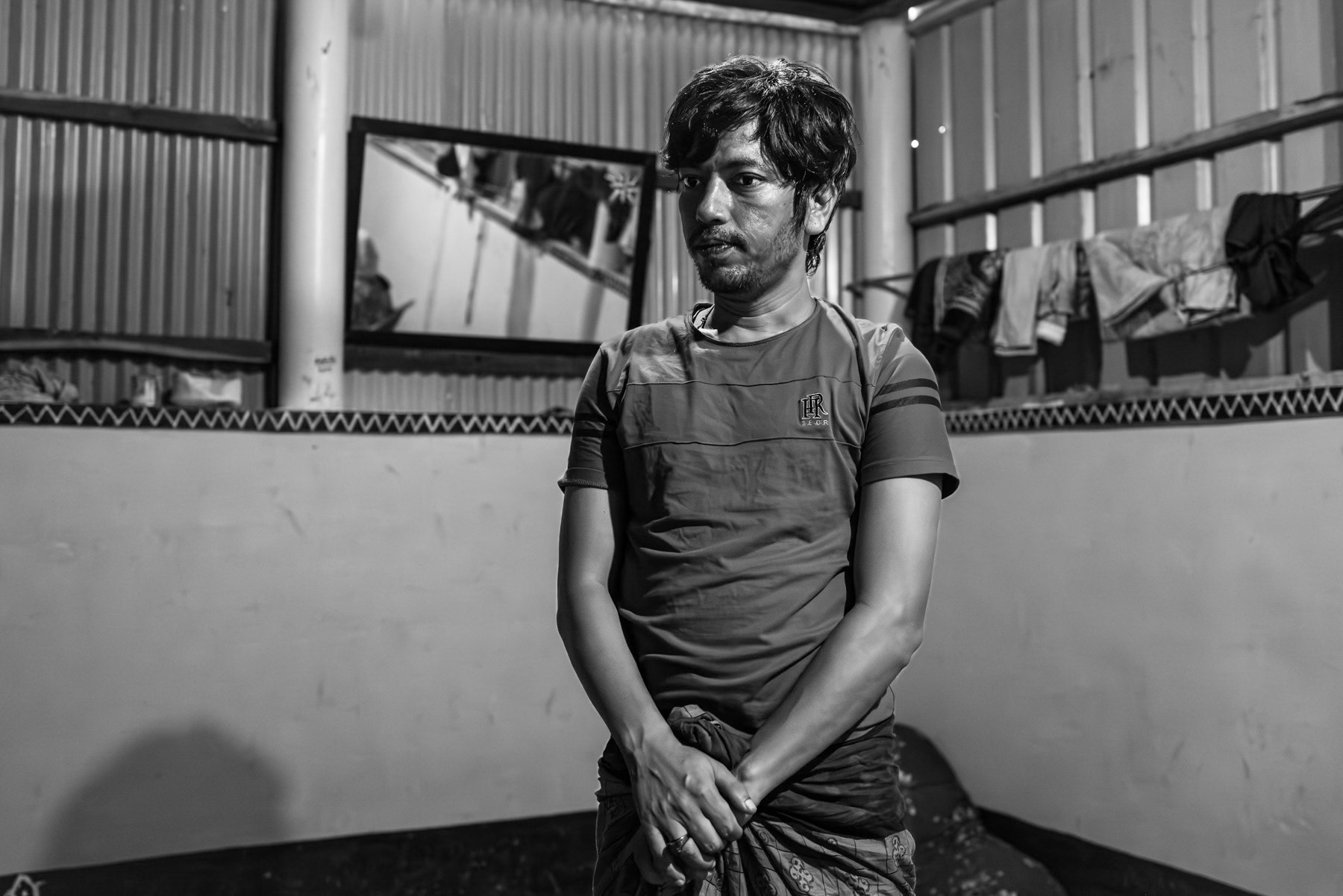
Shomsul, from Laway Daung in Buthidaung Township, stands for a portrait in Bangladesh, where he has lived since fleeing the mass expulsion and widespread violence against Rohingya communities in 2017. He recounts ongoing fears for relatives who remained in Myanmar, including recent attacks on his home village and the disappearance of community members at the hands of the Arakan Army. Kutupalong refugee camp, Ukhiya, Bangladesh, September 2025
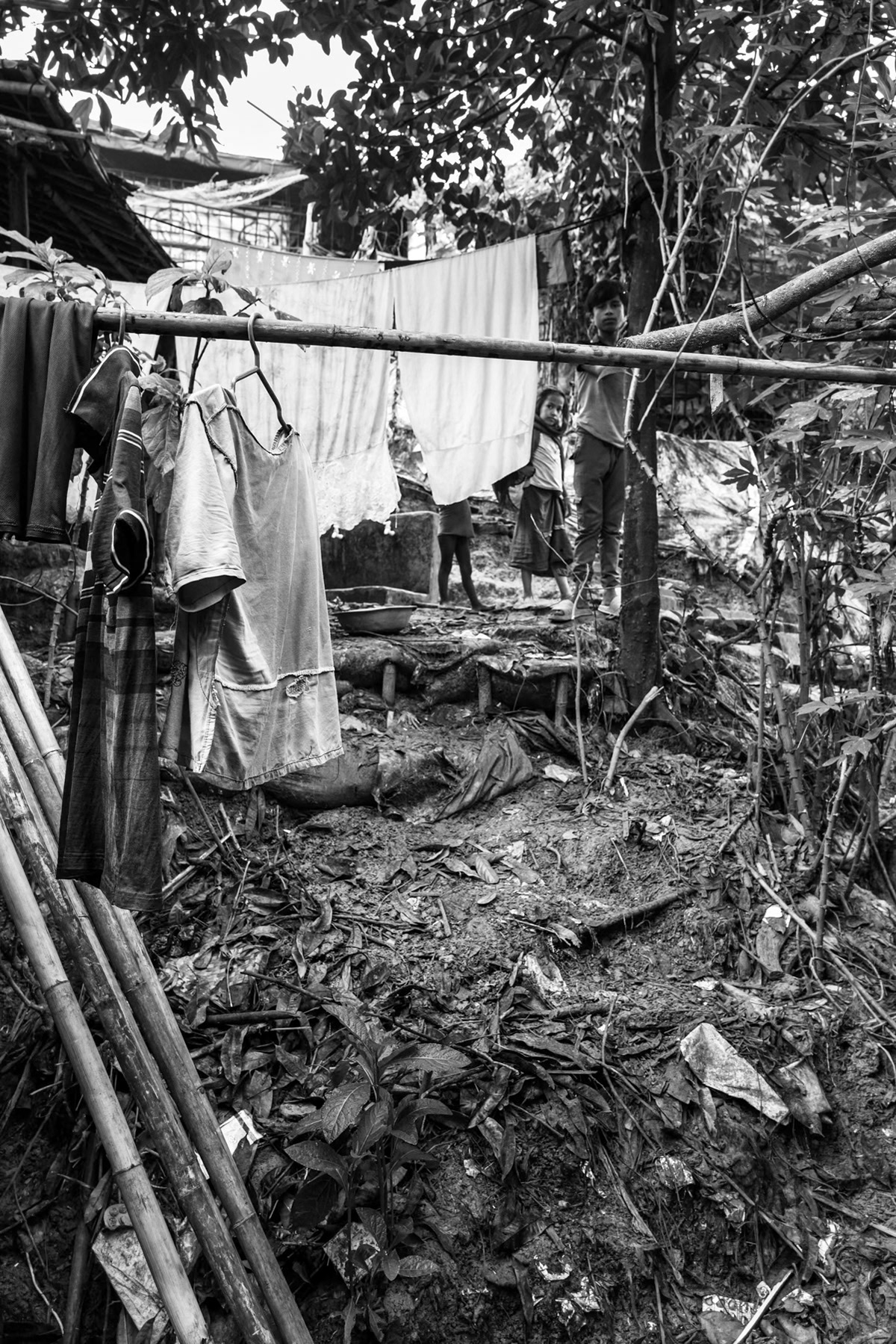
Laundry hangs to dry beside makeshift shelters on a steep hillside in the refugee camp, an area highly prone to landslides during the monsoon season. Kutupalong refugee camp, Cox's Bazar, Bangladesh, September 2025
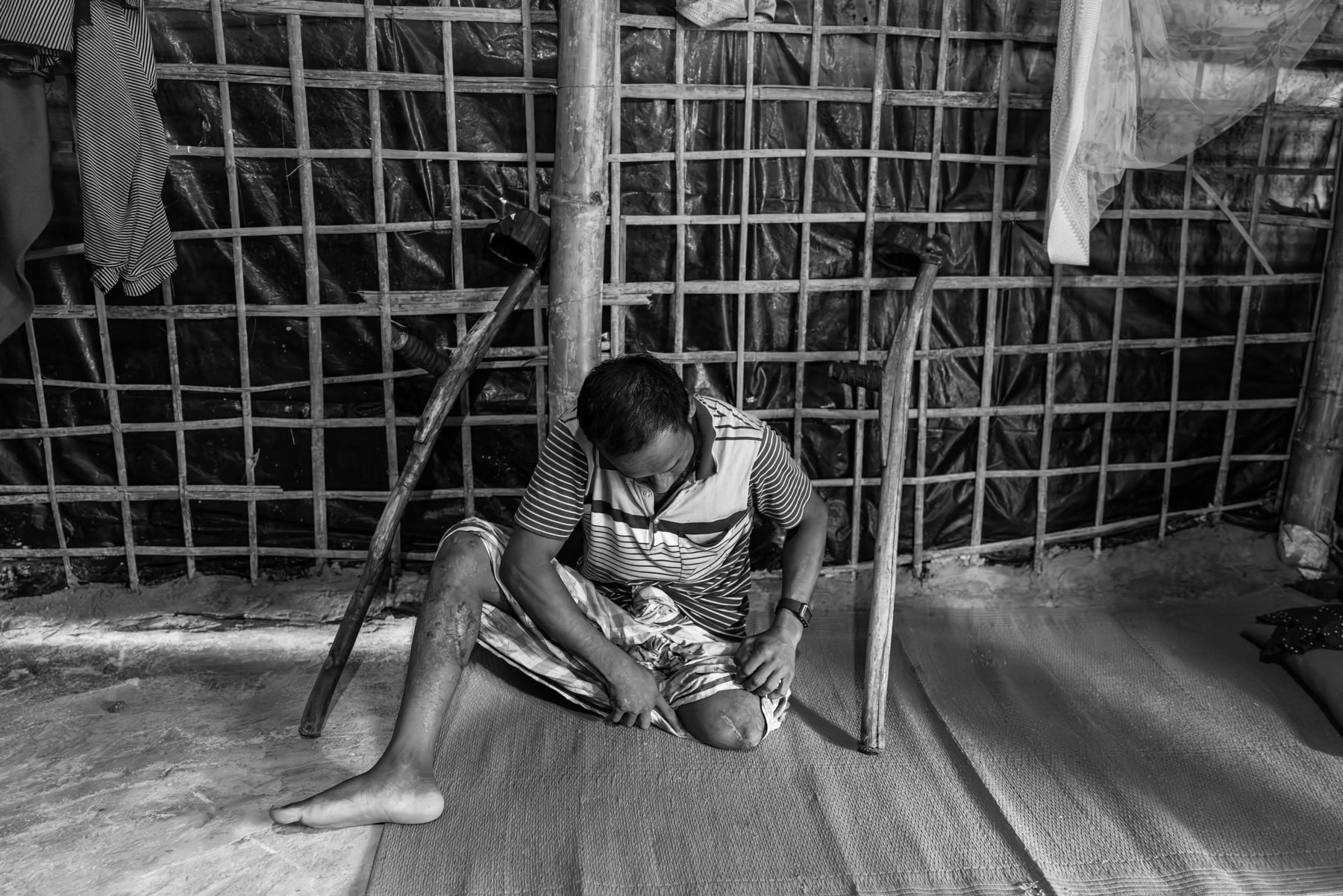
Abu Rahim, 32, from Lawidon village near Buthidaung, recounts losing his leg when the Arakan Army shelled his community in March 2024, shortly after ordering residents to evacuate. Dozens were killed and many more injured. Evacuated by the Arakan Army to Sandu village in Rathedaung Township, he was amputated in their medical facility and remained there for a year with other displaced Rohingya. He describes widespread extortion of villagers who were forced to contribute to the armed group’s war effort despite having lost everything. He arrived in Bangladesh in June 2025. Kutupalong refugee camp, Ukhiya, Bangladesh, September 2025
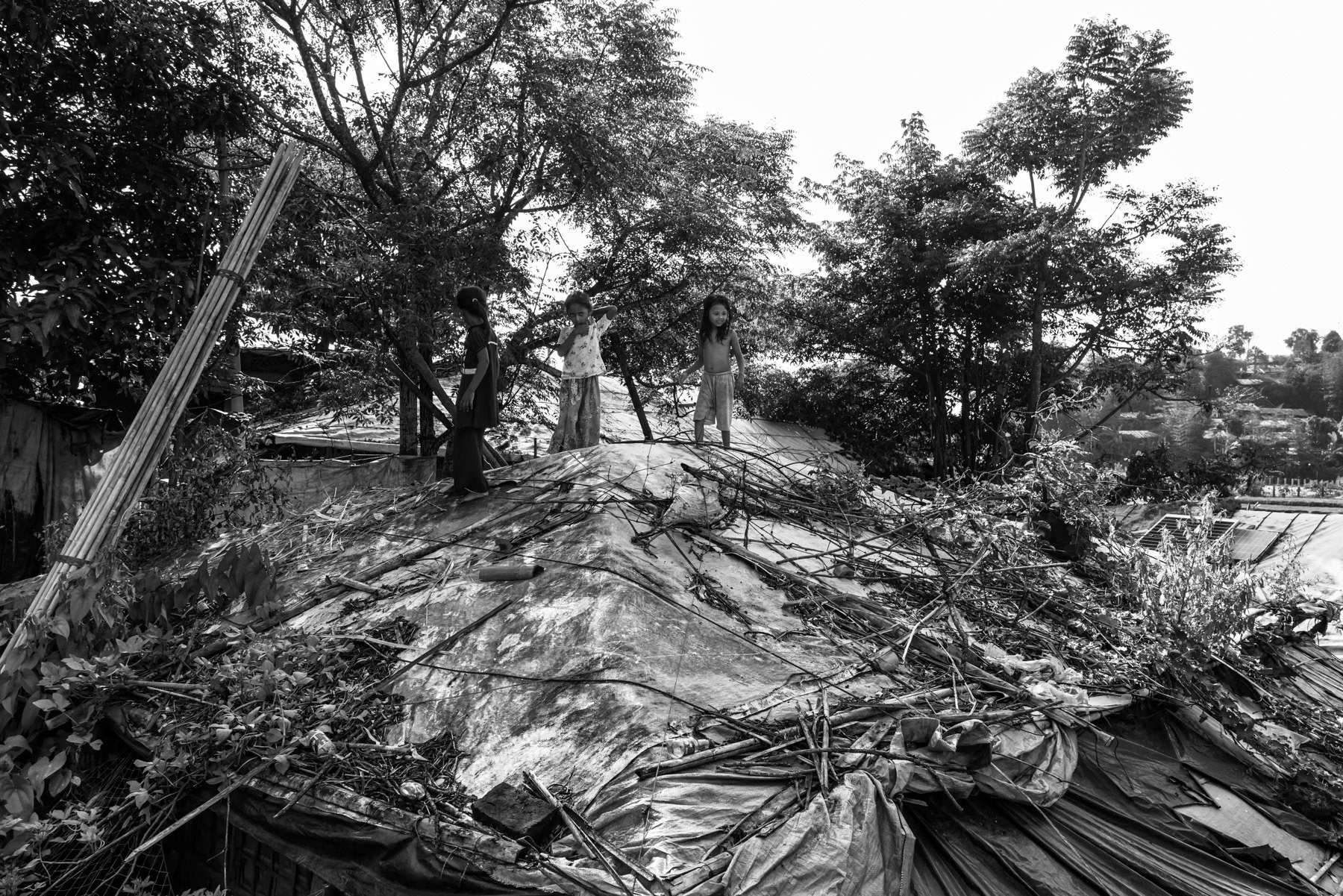
Three Rohingya girls play on the roof of a plastic-sheeting shelter in the refugee camp. Kutupalong refugee camp, Cox's Bazar, Bangladesh, September 2025
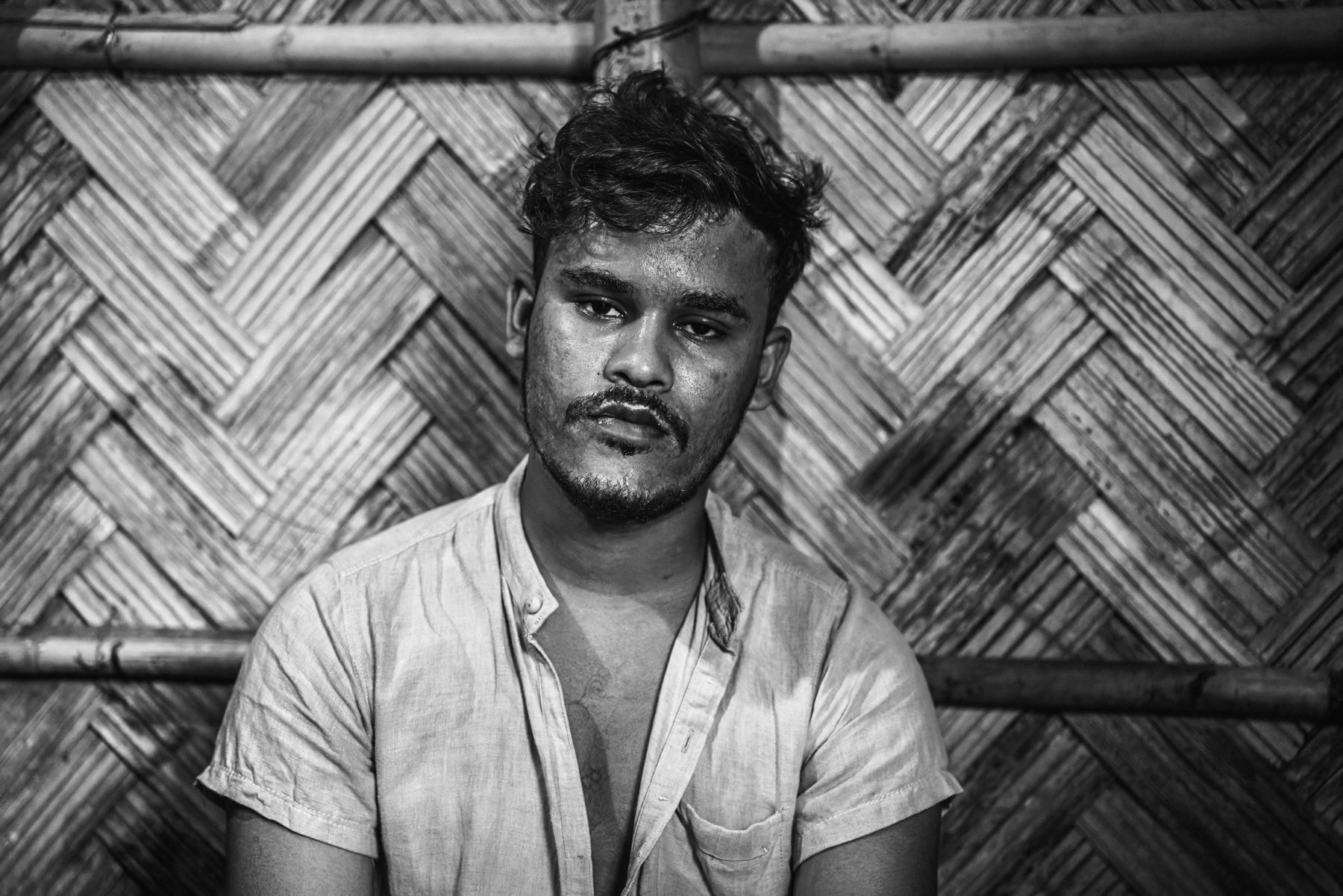
Aziz Khan, from Shida Fara village in Maungdaw, survived a drone attack near the Naf River while fleeing Myanmar on 25 August 2024. His parents, two brothers, and one sister were killed during the attack, and he sustained a leg injury. He left with his remaining family and arrived in Bangladesh on 27 August 2024. Before displacement, he worked as a shopkeeper in Maungdaw. Kutupalong refugee camp, Ukhiya, Bangladesh, September 2025
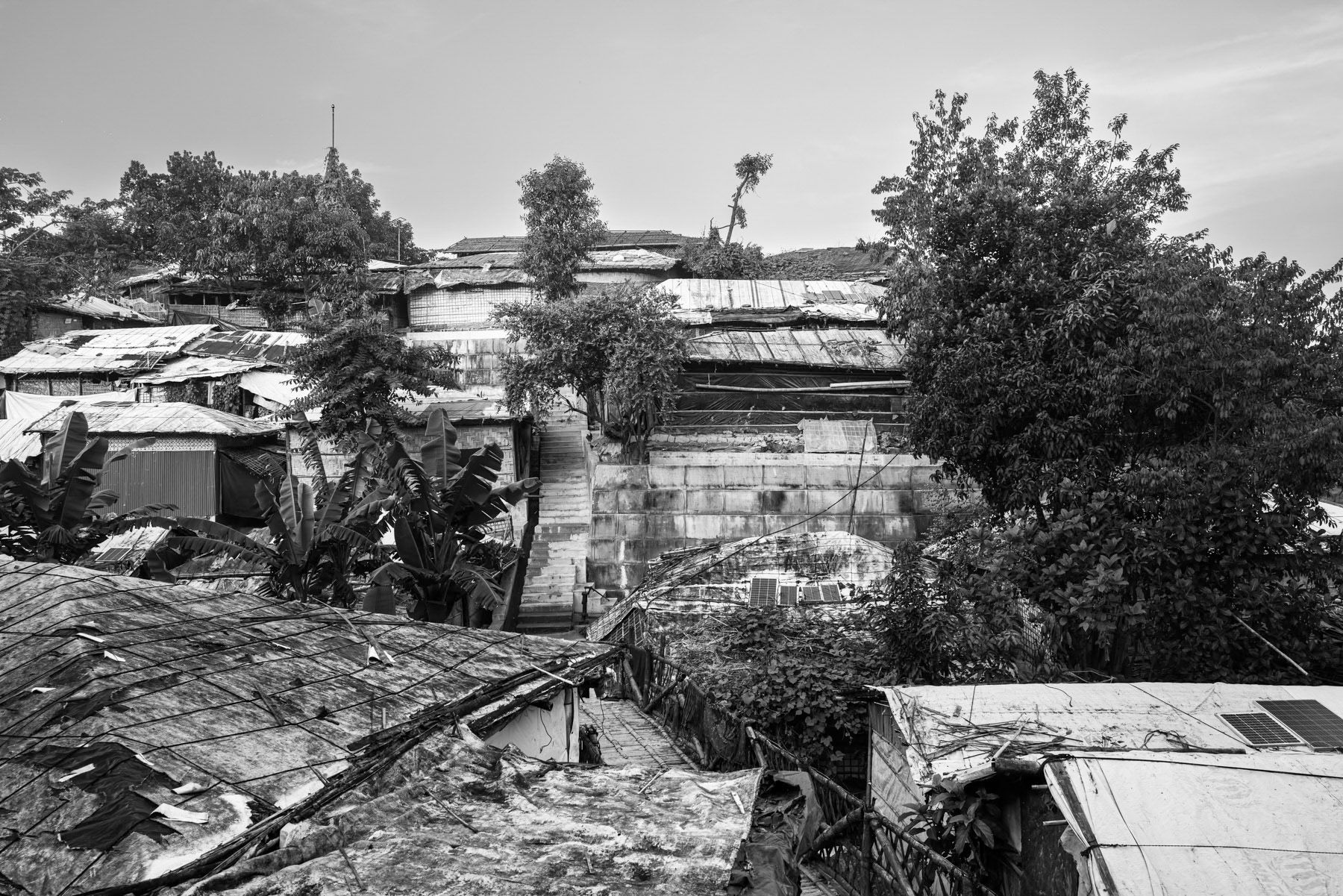
Makeshift shelters stretch across Kutupalong camp, providing temporary refuge for Rohingya families fleeing violence in Rakhine, with approximately 150,000 new arrivals since early 2024. Kutupalong refugee camp, Cox's Bazar, Bangladesh, September 2025
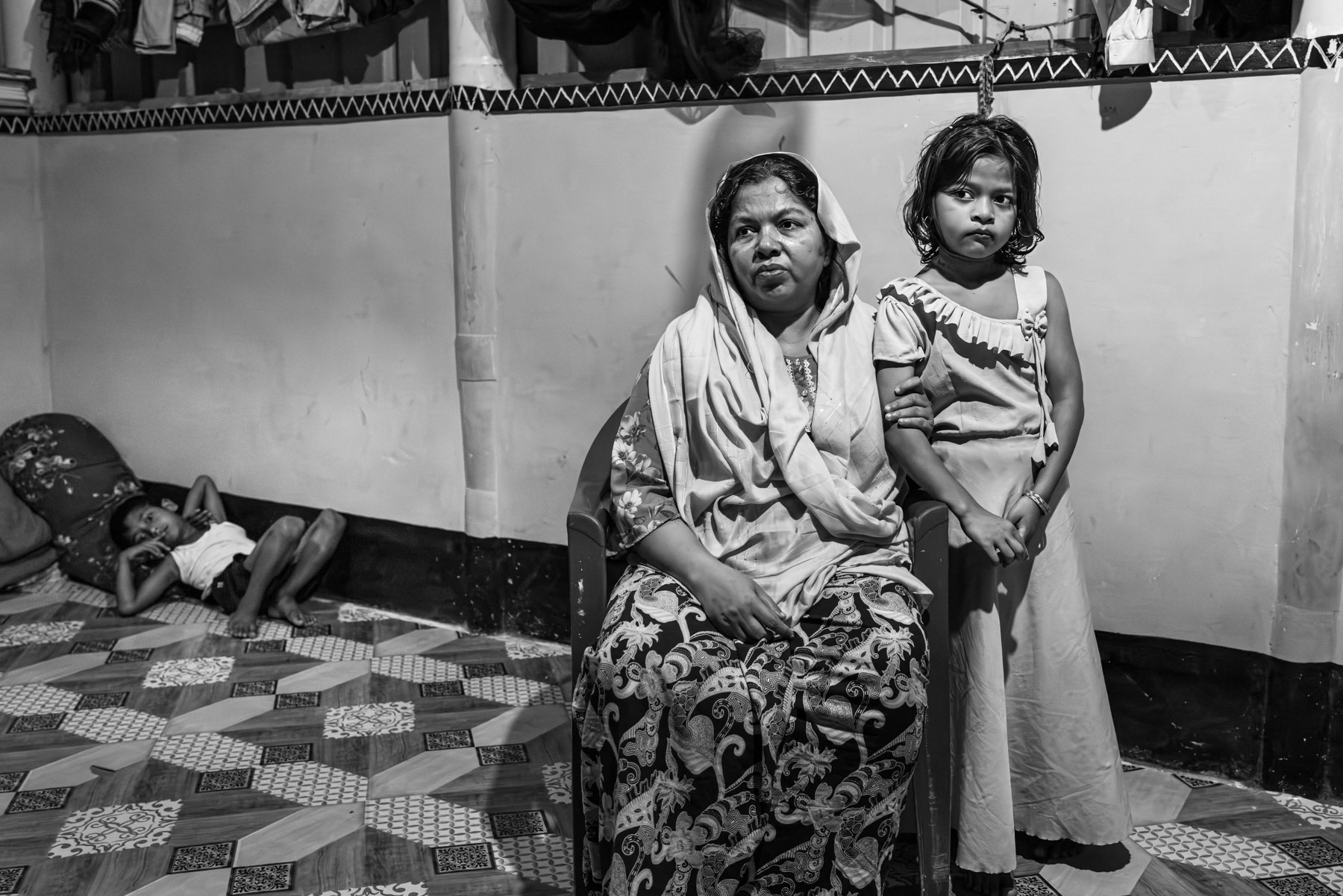
Morija, 40, from Laway Daung in Buthidaung Township, sits with her daughter beside her after fleeing their village following attacks carried out by the Arakan Army in May 2024. She reports that roughly 1,500 people were killed in the area, according to eyewitness accounts. Two to three months before the assault, her husband, Md Noor, 42, a community leader, and her 17-year-old son, Rashed, were arrested by the Arakan Army; she has had no news of them since. Morija escaped to Bangladesh with her four younger children, arriving in December 2024. Kutupalong refugee camp, Ukhiya, Bangladesh, September 2025


